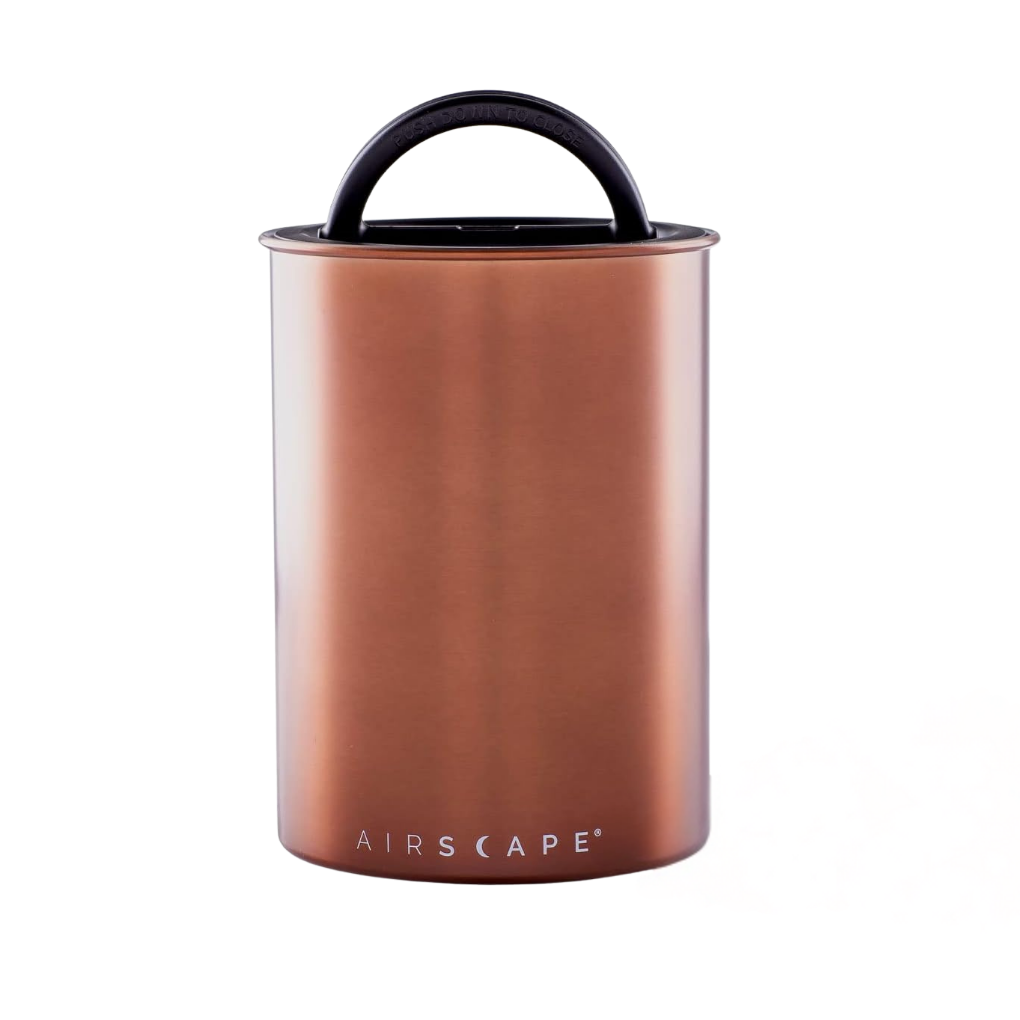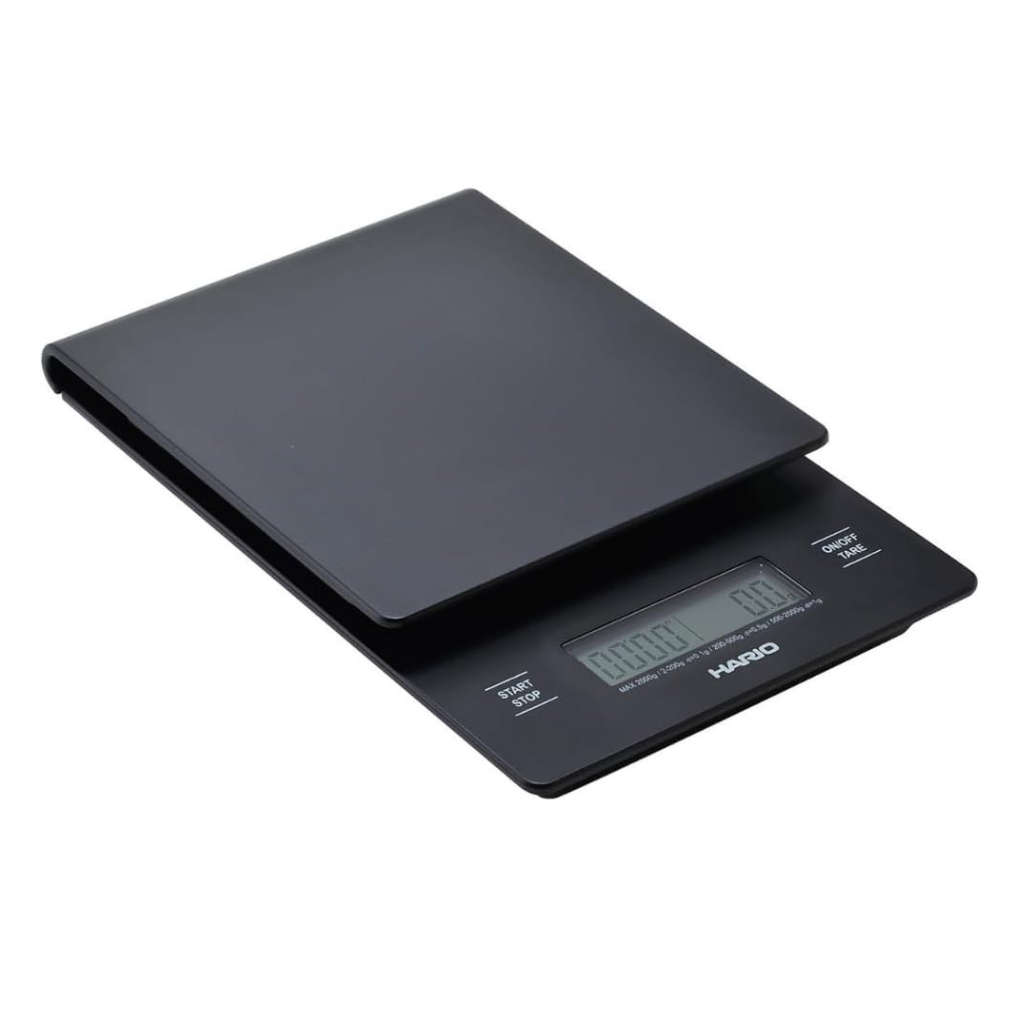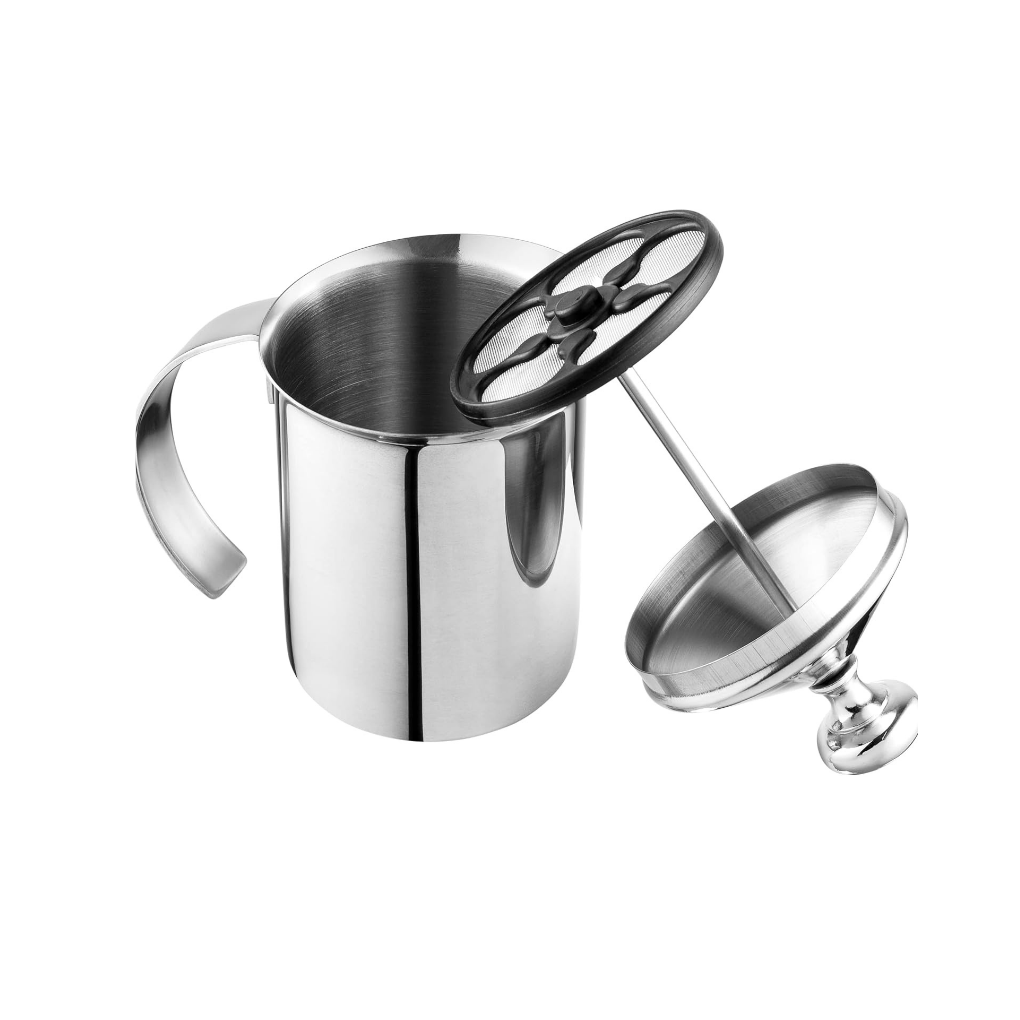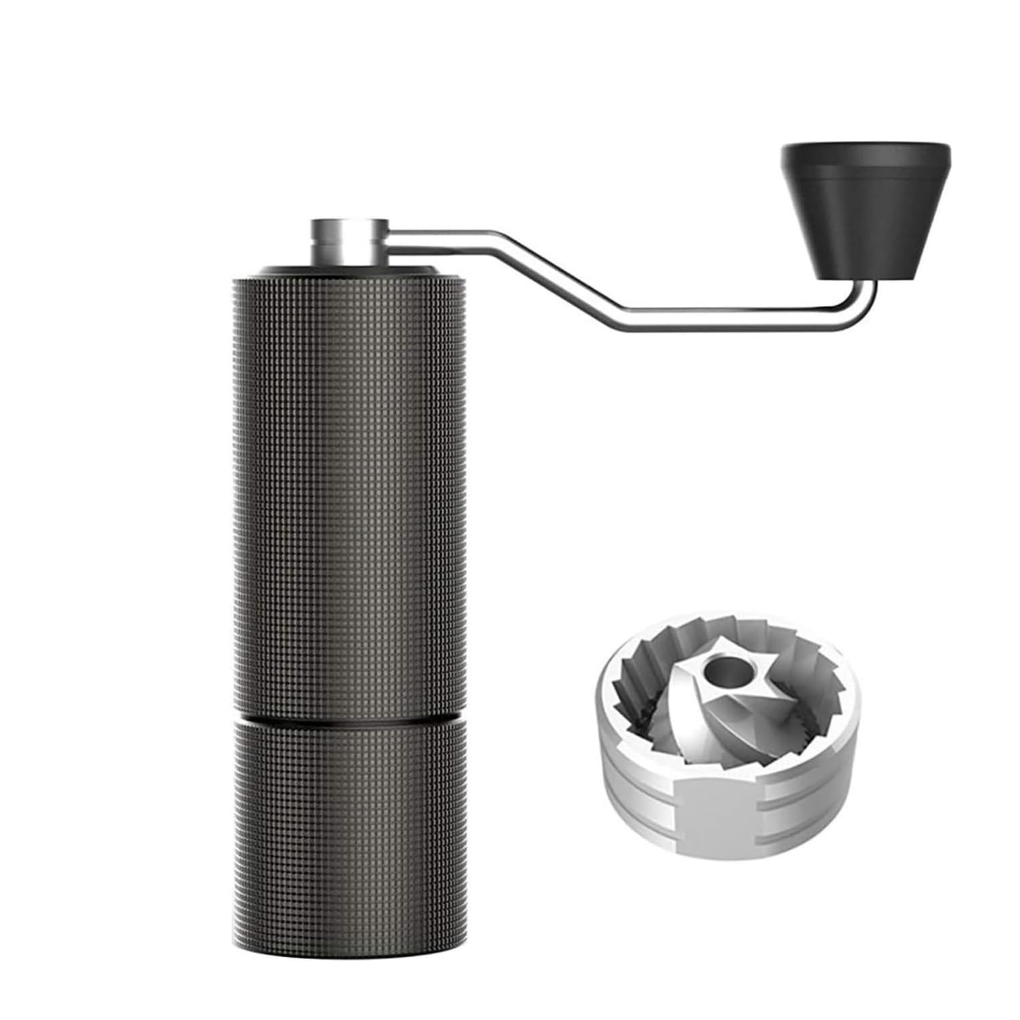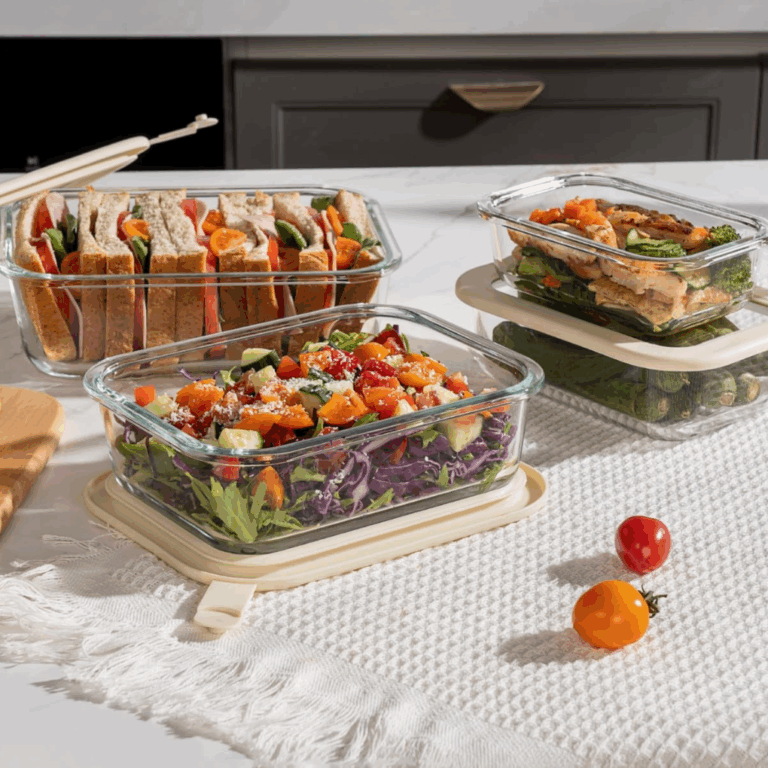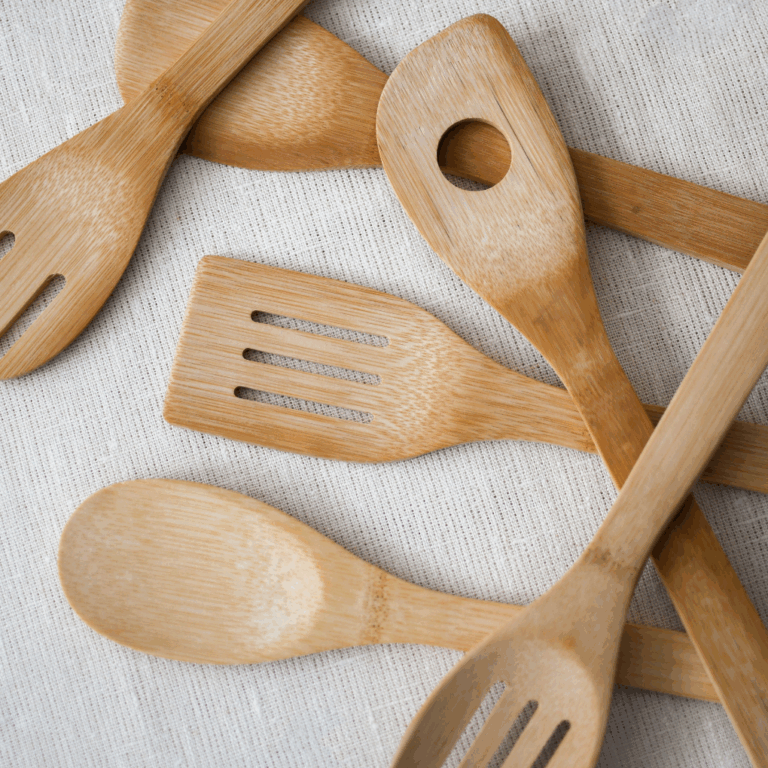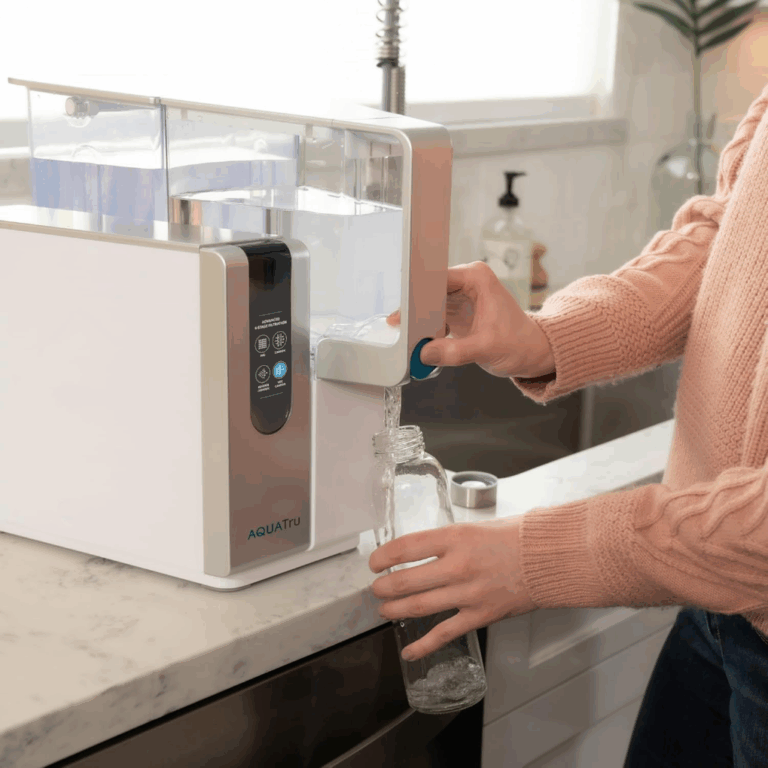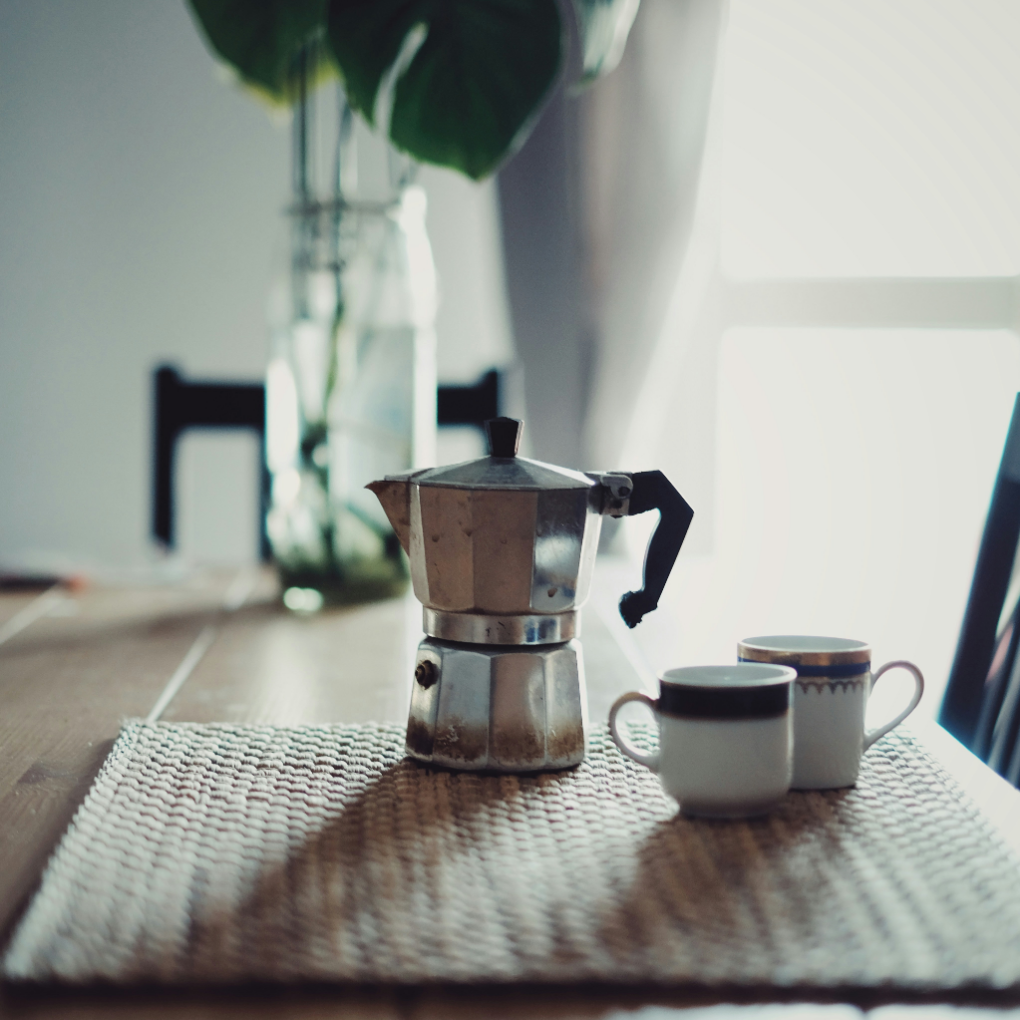
Key Takeaways
- A plastic-free coffee maker helps you avoid exposure to chemicals like BPA and microplastics in your daily brew.
- Choosing stainless steel, glass, or ceramic designs ensures your coffee stays pure and flavorful.
- Making the switch to a plastic-free coffee maker also reduces single-use waste and supports a more sustainable lifestyle.
I used to love my old coffee maker—the satisfying click of the plastic pod snapping into place, the quick buzz, and that instant cup of coffee. That convenient plastic machine was one of the first things to go when I started paying attention to what was touching my coffee, and it set me on the path to finding a plastic-free coffee maker.
And it turns out I wasn’t wrong to ditch it.
When hot water passes through plastic components, it can release hundreds to thousands of microplastic particles per liter, including coffee brewed in machines with plastic reservoirs, tubing, or pods. Even more concerning, BPA leaches 55 times faster into hot, acidic coffee than into cool water, meaning your morning brew could be delivering a concentrated dose of hormone-disrupting chemicals along with your caffeine.
Since I drink coffee every day, I decided it was time to upgrade not just for flavor but also for my health. In this guide, we’ll take a closer look at plastic-free coffee makers, what to look for (and avoid), and why material matters in your morning brew.
Why Choose a Plastic-Free Coffee Maker?
It’s easy to overlook what your coffee maker is made of—until you realize it could be dosing your daily cup with microplastics. Most conventional brewers rely on plastic components in places that heat up or come into direct contact with water: the reservoir, internal tubing, pod holders, or even the brewing chamber itself.
And that’s where the problem starts.
Microplastics + Heat = Daily Exposure
Exposure to high temperatures, such as boiling water or steam, can release microplastics and other chemical additives into whatever it touches, including your coffee. These particles are small enough to slip through water filters, pass into your cup, and be swallowed with every sip. Over time, this exposure accumulates, especially if you use the same plastic-based coffee maker on a daily basis.
While we’re still learning about the full health implications, early research has linked microplastics to potential inflammation, hormone disruption, and organ accumulation. It’s not exactly the kind of pick-me-up most of us want in the morning.
Beyond the Mug: The Environmental Impact
Even if you’re not worried about personal exposure, there’s the broader issue of waste. Most traditional coffee machines are composed of plastic parts that aren’t recyclable, and single-use pods exacerbate the problem. Globally, less than 9% of plastic waste is recycled, and a significant portion of what we discard ends up in landfills, incinerators, or ecosystems.
By choosing a coffee maker made from plastic-free materials like stainless steel, Glass, or ceramic, you’re not just protecting your health. You’re also reducing the demand for fossil fuel-based plastics and cutting off one more waste stream before it starts.
Health Concerns and Microplastic Exposure
When you’re brewing coffee, you’re not just heating water; you’re heating everything it comes into contact with. And if your coffee maker has plastic components, that includes materials that can release microplastics, nanoplastics, and a range of chemical additives into your drink.
What’s Actually in Plastic Coffee Makers
Many plastics used in coffee makers, especially those in cheaper models, contain chemicals such as BPA, phthalates, and other plasticizers that help make the material flexible or heat-resistant. Others may use PVC (polyvinyl chloride) or contain PFAS, sometimes referred to as “forever chemicals,” which don’t break down easily and have been linked to long-term health effects.
Even products labeled “food-safe plastic” aren’t always safe. Heat, pressure, and acidity (hello, coffee!) can all accelerate chemical leaching, meaning you could get trace amounts of these substances in every brew. Some machines have even been found to release heavy metals, such as lead or antimony, when tested under high temperatures.
Microplastics and Nanoplastics in Your Coffee
Recent studies have shown that microplastics and nanoplastics, even smaller plastic particles, can shed from heated plastic parts and migrate into water. Once ingested, these tiny particles may pass through the gut barrier and enter the bloodstream, where they can build up in organs over time. While research is still evolving, preliminary findings suggest connections to inflammation, oxidative stress, and hormonal disruption.
Choosing Safer Alternatives
Swapping out your plastic-based coffee maker for one made of stainless steel, Glass, or ceramic helps eliminate many risks. These materials don’t rely on chemical additives to withstand heat and won’t degrade into microparticles after months or years of use.
If you want a safer, cleaner, and more mindful brew, avoiding plastic where heat and water meet is a strong place to start.
Types of Plastic-Free Coffee Makers
Whether you’re brewing for one or the whole household, there’s a plastic-free coffee maker to match your method. The goal is simple: choose a brewing style you love, made from materials that won’t break down under heat or expose you to microplastics.
| Brewing Method | Brewing Difficulty | Cleanup Level | Best For | Price Range |
|---|---|---|---|---|
| French Press | Easy | Moderate | Rich, full-bodied coffee | $–$$ |
| Pour-Over | Moderate | Easy | Clean, bright flavor | $–$$ |
| Drip Coffee Maker | Easy | Easy | Daily, hands-off brewing | $$–$$$ |
| Moka Pot | Moderate | Easy | Espresso-style coffee | $–$$ |
| Percolator | Moderate | Easy | Strong, classic coffee | $–$$ |
| Manual Espresso Machine | Advanced | Moderate | Espresso enthusiasts | $$–$$$$ |
French Press
The French press uses immersion brewing as a reliable and low-waste option to extract rich, full-bodied flavor. Look for versions made from stainless steel, ceramic, or borosilicate glass. Avoid models with plastic plungers, lids, or mesh frames, as these parts often come into contact with hot water.
Pour-Over Coffee
Clean, bright, and ideal for control freaks (in the best way), pour-over brewers are typically made from Glass, ceramic, or stainless steel. These materials withstand heat and don’t introduce unwanted flavors. Just keep an eye on filter holders or bases, as some include hidden plastic that comes into contact with hot water or the filter.
Drip Coffee Makers
Most standard drip machines are loaded with plastic from the water tank to the brew basket. However, some higher-end models utilize glass carafes, metal housing, and internal components to prevent plastic from entering the water path. It’s worth checking the technical specs to confirm which materials come into contact with water and steam.
Moka Pot (Stovetop Espresso)
This stovetop classic creates strong, espresso-like coffee using pressure. Stainless steel models are the safest bet if you’re aiming to avoid plastic entirely, especially those without rubber or plastic handles, gaskets, or internal seals.
Percolator
An older brewing method gaining traction again, percolators cycle boiling water through coffee grounds using gravity and pressure. When thoughtfully designed, stainless steel versions, electric or stovetop, offer a completely plastic-free experience.
Manual Espresso Machines
Manual lever machines and press-style espresso makers offer complete control over pressure and temperature, and many are constructed entirely from stainless steel, chrome, or brass. Since they don’t rely on plastic pods or internal reservoirs, they’re an excellent option for plastic-free brewing, especially if you prefer a stronger cup.
Don’t Miss: Plastic-Free Living Once you’ve found the perfect plastic-free coffee maker below, read this to learn why choosing plastic-free alternatives matters for your health and the planet. Read more →Materials Matter: What to Look When Buying a Plastic-Free Coffee Maker
Not all coffee makers are created equal—and when you’re trying to avoid plastic, the materials used make all the difference. Even machines with a sleek metal or glass exterior can hide plastic components inside, especially in valves, filter baskets, and water tanks.
If your goal is durability, safety, and a clean-tasting brew, here’s what to look for—and what to avoid.
Stainless Steel (Especially Food-Grade 304)
Stainless steel is one of the best choices for a plastic-free coffee maker. It’s non-reactive, long-lasting, and won’t absorb or transfer flavors. Models labeled food-grade 304 stainless steel (also known as 18/8) are exceptionally corrosion-resistant and safe for repeated exposure to heat and moisture. Some premium machines also feature double-wall insulation, which helps maintain brewing temperature without the need for plastic insulation layers.
Glass (Preferably Borosilicate)
Glass brewers, especially those made from borosilicate glass, are heat-resistant, easy to clean, and completely non-toxic. They won’t release chemicals or retain odors, making them a favorite for pour-over systems and French presses. The downside? They’re more fragile, so they may not be ideal if you’re looking for something travel-friendly or durable in the long term.
Ceramic
Ceramic is another excellent option for avoiding plastic altogether. It retains heat well and won’t affect the flavor of your coffee. It’s also non-toxic and doesn’t require linings or coatings. Just ensure the glaze is food-safe and free from heavy metals or lead.
Aluminum (Use with Caution)
Some stovetop brewers use die-cast aluminum, which is lightweight and affordable but more prone to wear and corrosion over time especially with acidic liquids like coffee. Unlike stainless steel or Glass, aluminum may also affect taste and is more reactive. While it’s technically plastic-free, it may not be the best long-term choice for health-conscious brewing.
Chrome-plated or Brass Components
Manual espresso machines often feature chrome-plated brass or metal filter baskets, which provide both durability and optimal performance. These metals are generally safe in high-quality machines but vary depending on the manufacturer’s plating processes. Look for brands that disclose their materials and avoid those with hidden BPA-free liners or plastic seals, which may still come into contact with heat or water.
Watch Out for Hidden Plastic Components
Even in so-called “metal” or “glass” brewers, it’s common to find plastic components used for filter holders, lids, reservoirs, or tubing. And while some companies advertise BPA-free parts, that doesn’t mean they’re free of all concerning additives. For true peace of mind, choose brewers where all components that come into contact with hot water are made from non-toxic materials—no plastic, period.
Are Plastic-Free Coffee Makers Durable?
In most cases, yes! Metal and glass parts tend to hold up longer than plastic under heat stress. Some models are designed for longevity and easy part replacement, so you’re not forced to discard the entire unit if a filter lid cracks.
🛡️ Why They Last Longer: Stainless steel and borosilicate glass don’t degrade from repeated heating and cooling cycles like plastic can. They resist staining, odor absorption, and the brittleness that develops in plastic over time.
🔧 Built for Repair, Not Replacement: Many premium plastic-free coffee makers are designed with serviceability in mind. Brands like Technivorm, La Pavoni, and Bialetti offer replacement parts for decades after purchase. A broken gasket or cracked carafe doesn’t mean you have to buy a new machine.
🔥 Heat Stress Resistance: While plastic components can warp, crack, or develop stress fractures from thermal cycling, metal and glass components maintain their structural integrity through thousands of heating cycles.
⚖️ The Trade-offs: Glass components can break if dropped, and some metal parts may develop mineral buildup over time. However, these issues are typically repairable rather than requiring full replacement.
💎 Investment Quality: While most plastic-free coffee makers are initially more expensive, they often prove more economical in the long run. A well-maintained Chemex, Moccamaster, or quality French press can last decades with proper care.
Plastic-Free Coffee Maker Recommendations and Reviews
Finding a truly plastic-free coffee maker requires looking beyond “BPA-free” labels. Many brands still use plastic in critical areas, such as water reservoirs, brew baskets, or internal tubing, despite the exterior appearing to be all-metal. The recommendations below prioritize brewers that eliminate plastic from water and coffee contact points. However, some may include minimal plastic components, such as handles or exterior housing, that never come into contact with your brew.
Pour Over Method
Chemex Pour Over
$49
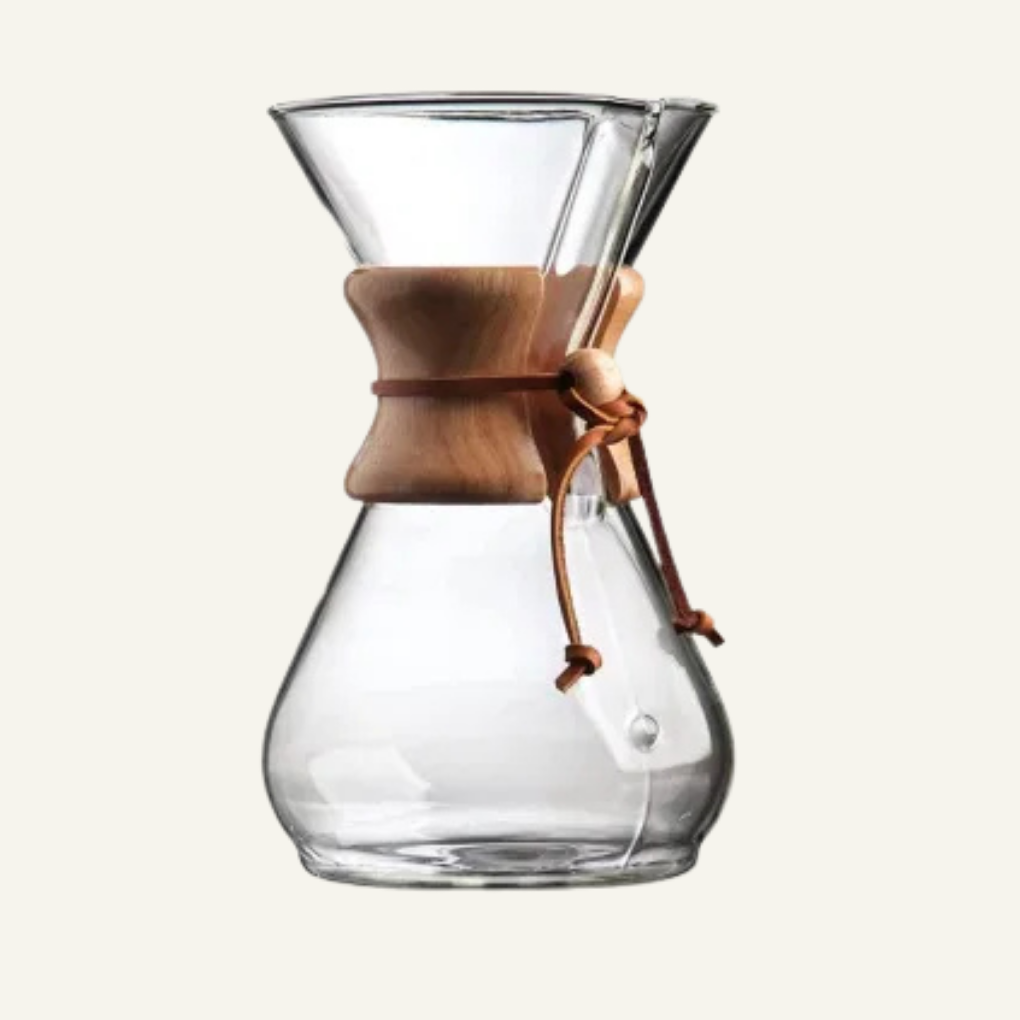
The iconic 8-cup, hourglass-shaped Chemex has been a design favorite since 1941, and it’s still one of the most beautiful ways to brew coffee without a trace of plastic.
Its classic borosilicate glass body keeps flavors pure and chemical-free, while the thick, specialized filters create that signature clean, bright cup Chemex fans love.
If you want a brewer that looks stunning on your counter and elevates your morning ritual, this one delivers every time.
Material: Non-porous borosilicate glass, sustainably harvested North American wood collar, hand-tied leather thong.
Personal Review
I used a smaller Chemex for a while, and it consistently made a smooth, easy-drinking cup. The whole pour-over process feels calming and a little elevated, like you’re treating yourself without trying too hard.
What I Liked
- The coffee always tasted smooth and well-balanced
- The brewing process feels relaxing and simple
- Looks beautiful on the counter — very “aesthetic kitchen” vibes
- No plastic touching the coffee at any point
What I Didn’t Like
- It’s not the best choice if you’re in a rush
- The glass can feel a little delicate
- You have to buy the specific filters
Hario V60 Ceramic Dripper
$27
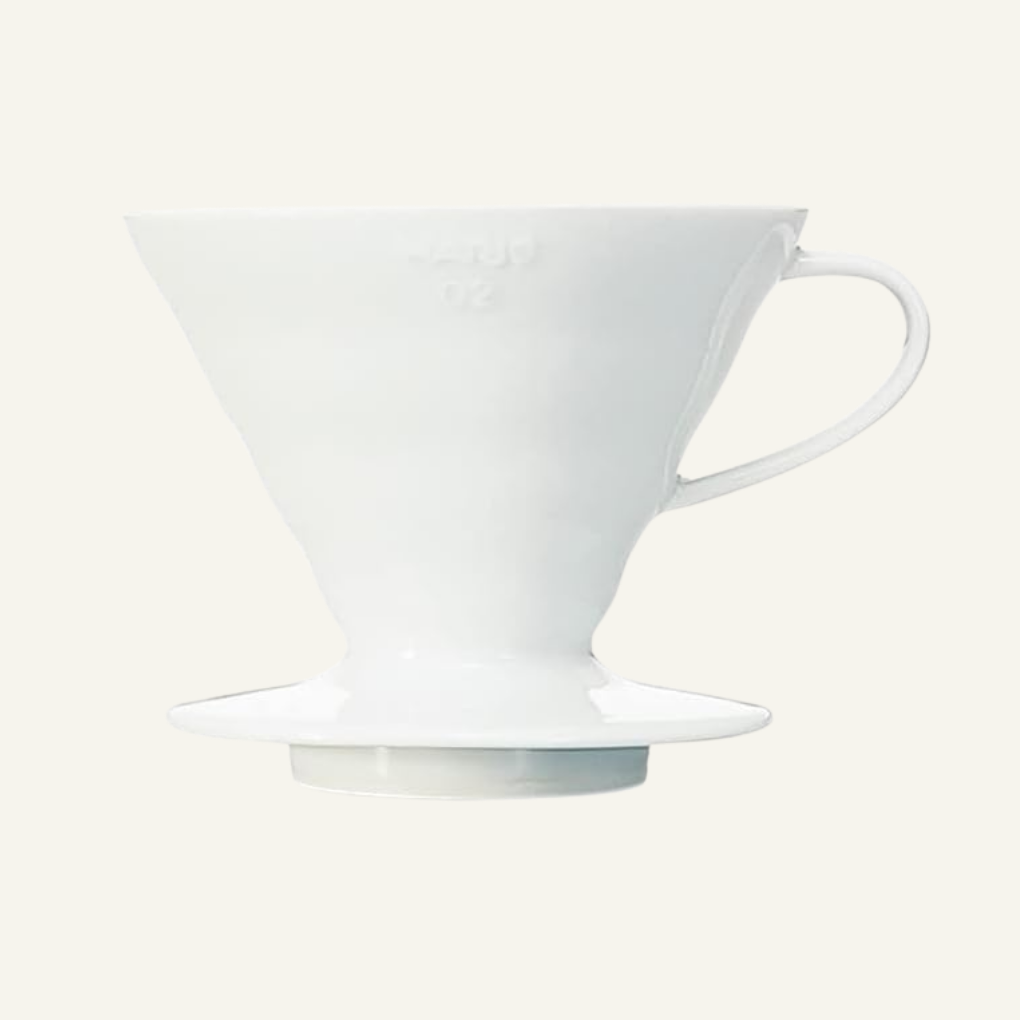
The Hario V60 is one of those pour-over brewers that coffee people absolutely swear by. Baristas love it, home brewers adore it, and it’s become the go-to for anyone who wants more control over their cup.
The ceramic version is especially stunning. It’s made in Japan using Arita-yaki, a traditional ceramic style that dates back centuries. Each one is handcrafted, offering a perfect blend of modern simplicity and artisan charm.
- Material: Handcrafted Arita-yaki ceramic (traditional Japanese porcelain).
| Mastering Your Pour-Over | |
|---|---|
| Brewing Tips | What to Do |
| Grind Size | Use a medium-coarse grind (like kosher salt). Too fine = over-extracted; too coarse = weak. |
| Water Temperature | Aim for 195–205°F. If you don’t have a thermometer, boil water then let it cool for 30–60 seconds. |
| Blooming | Wet the grounds with about 2x their weight in water and allow 30–45 seconds for the bloom. |
| Pour Technique | Pour slowly in circles from center outward. Keep the water level steady; avoid pouring on the filter. |
| Brew Time | Target a total brew time of 4–6 minutes. Too slow = grind coarser; too fast = grind finer. |
| Coffee-to-Water Ratio | Start with a 1:15–1:16 ratio. Example: 30g coffee → 450–480g water. |
| Rinse the Filter | Rinse paper filters with hot water to remove papery taste and preheat the brewer. |
| Gooseneck Kettle | Use a gooseneck kettle for precise pouring speed and placement. |
French Press Method
Simpli Press
$75
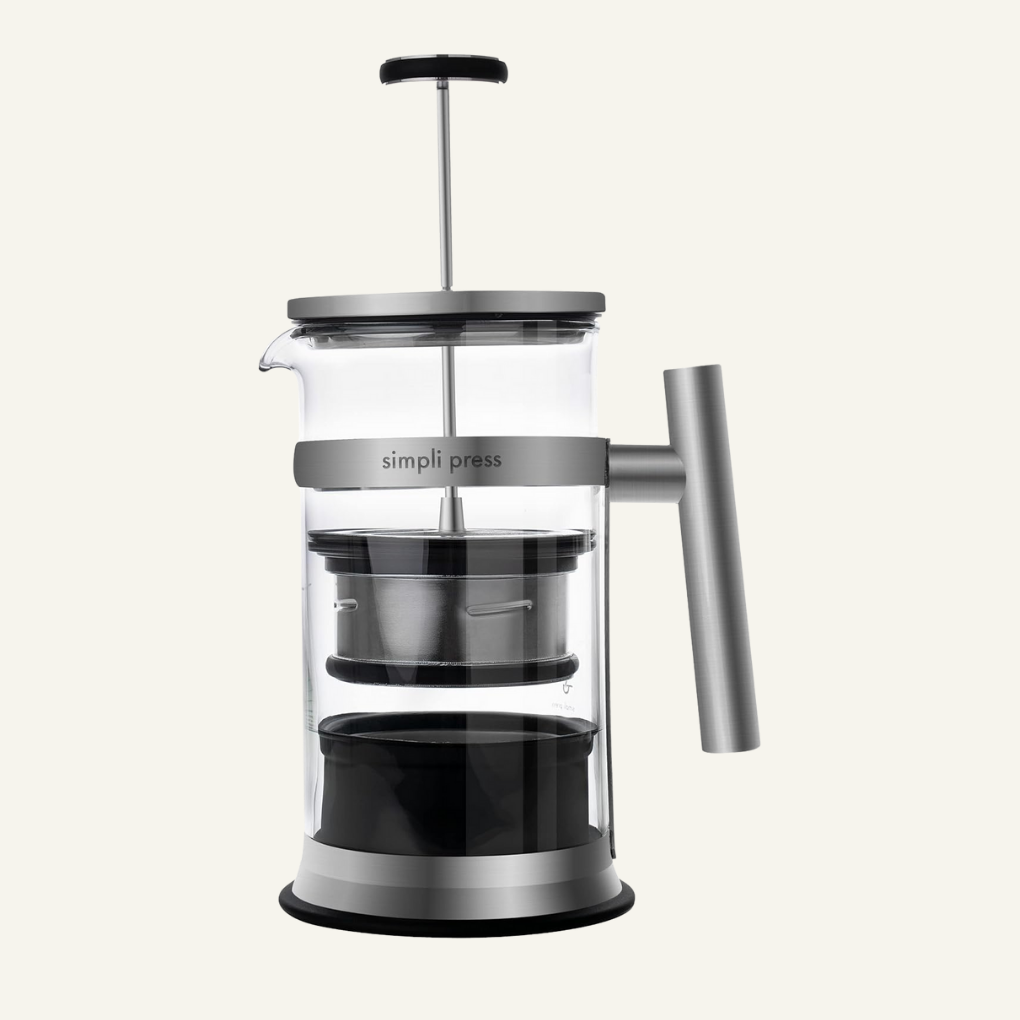
This French press was clearly designed by someone who gets it. No more scooping soggy grounds out of the bottom — the lift-out coffee basket makes cleanup way easier and keeps your sink from getting clogged. Such a small thing, but honestly a total game-changer.
The double stainless steel filter delivers rich, full-bodied French press flavor without gritty bits, and the glass carafe even has measurement lines so you’re not guessing on ratios.
Whether you’re using a coarse French press grind or whatever pre-ground coffee you already have at home, it brews a solid, consistent cup in about three minutes. It’s simple, quick, and kind of a dream if you want that classic French press taste without the hassle.
- Material: Borosilicate glass carafe, stainless steel filter system and frame, food-grade silicone gaskets, completely plastic-free construction.
Sivaphe Single Serve French Press
$20
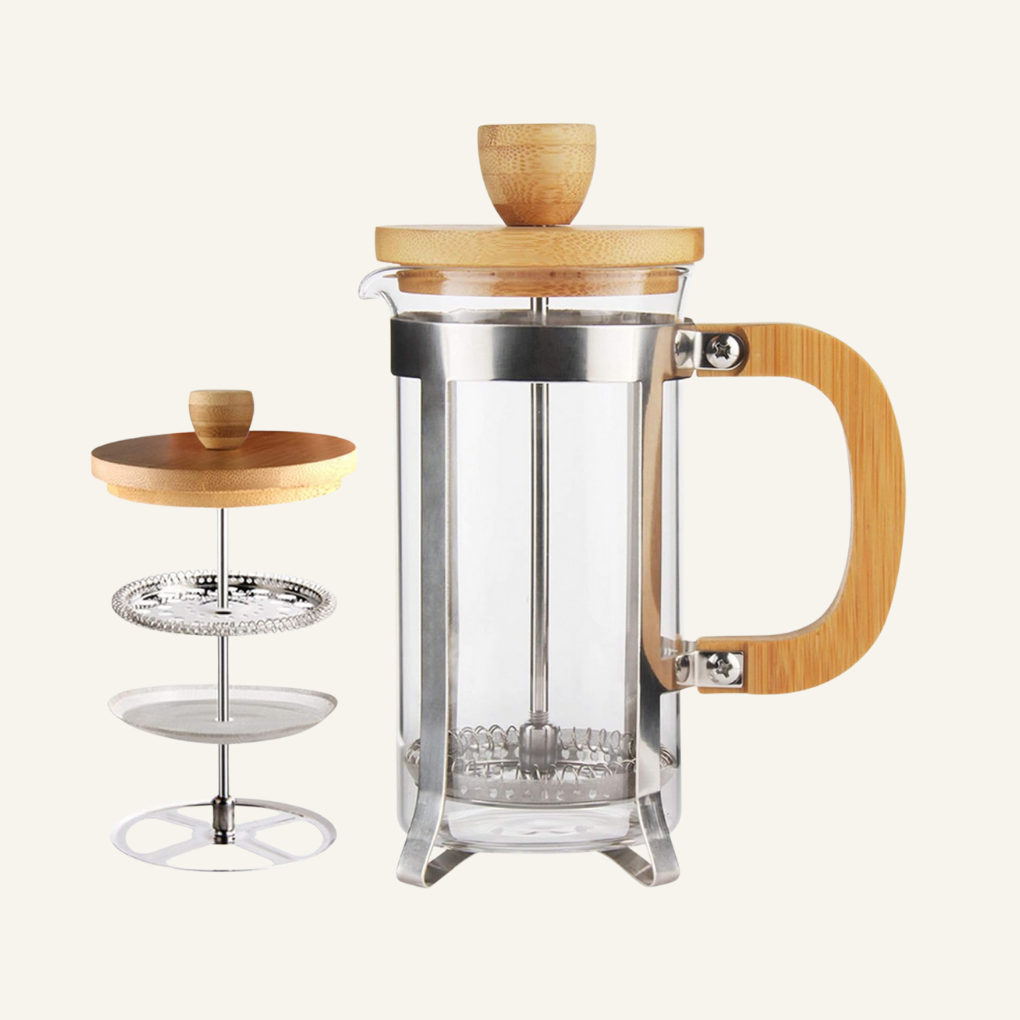
If you love brewing just one perfect cup at a time, this little 12-oz French press is such a gem. It’s compact, modern, and made with natural materials that give it a really warm, minimal vibe.
The single-serve size means no wasted coffee — just 2–4 minutes and you’ve got a fresh cup that feels intentional and cozy. The bamboo handle adds a really nice touch too; it’s one of those small details that make your morning routine feel a little more elevated.
The fine mesh stainless steel filter keeps your coffee smooth and sediment-free, and the sturdy base helps prevent spills so everything stays neat and effortless.
- Material: Heat-resistant borosilicate glass carafe, stainless steel filter system and frame, natural bamboo handle
MuellerLiving All-Stainless Steel French Press
$55
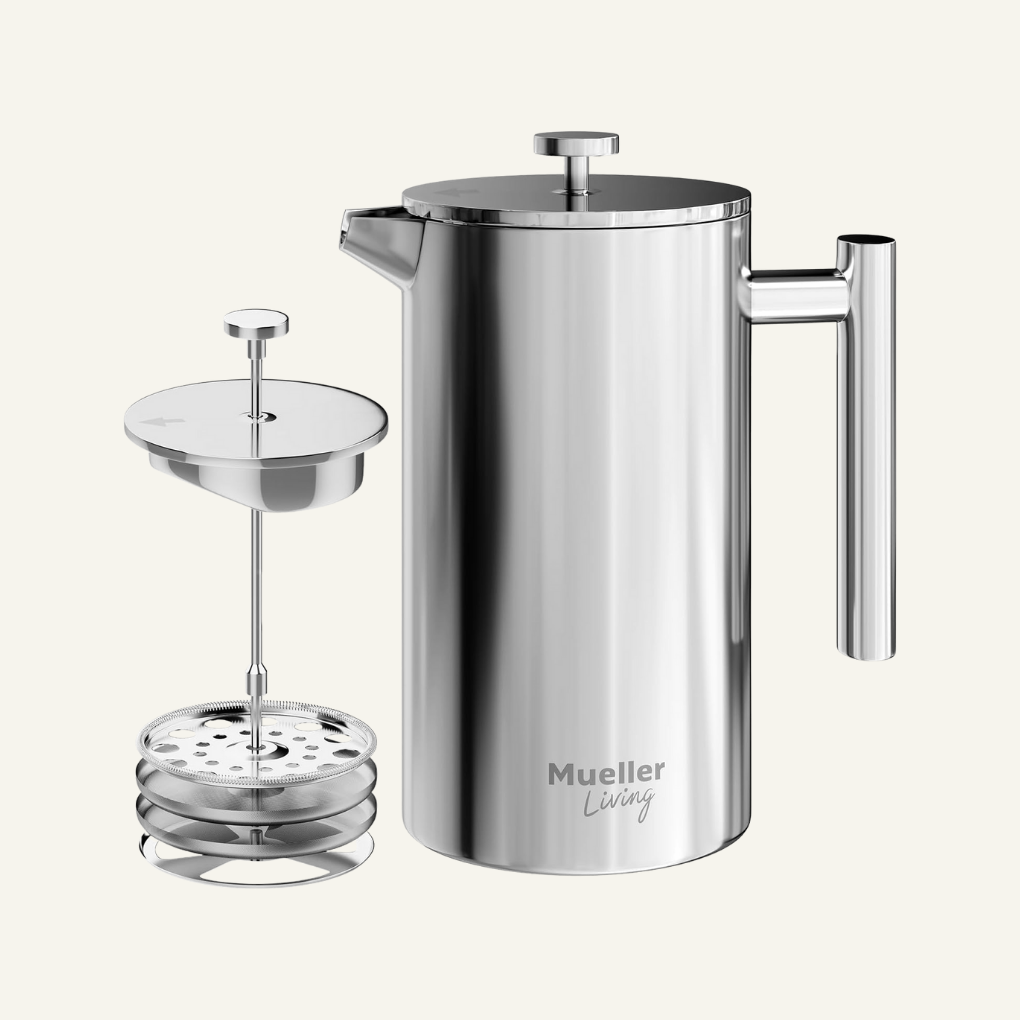
If you want a French press that can handle anything, this 34-oz all-metal design is such a powerhouse.
The double-walled stainless steel makes it ideal for camping, office use, or everyday home brewing. It’s rugged, reliable, and totally unfazed by drops or temperature changes.
And the filtration system? So good. It uses multiple stainless steel screens plus a coiled filter, so you get that classic French press flavor without the gritty bits at the bottom of your cup.
- Material: Food-grade stainless steel construction throughout, rust-free double-wall insulation, dishwasher-safe components.
Moka Pots/Stovetop Espresso Method
Bialetti Moka Express – Original Stovetop Espresso Maker
$50
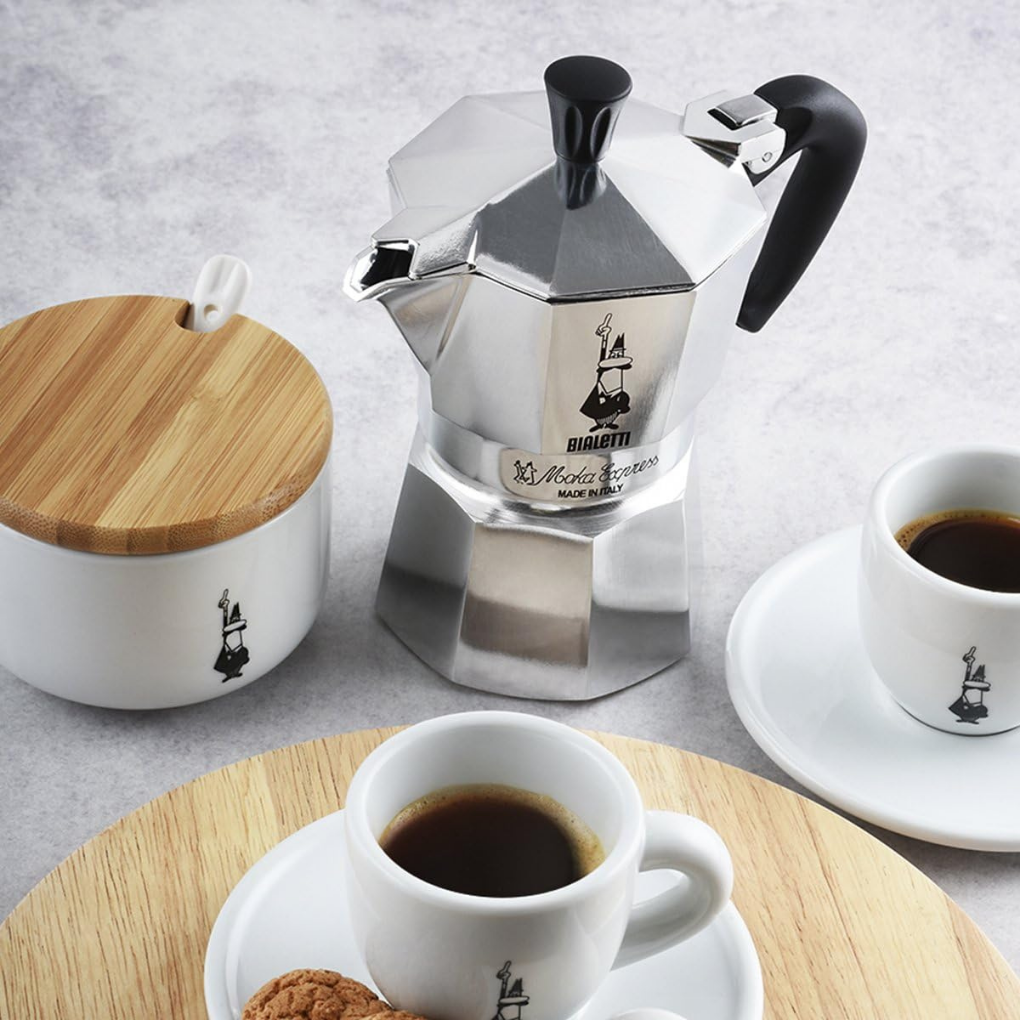
As an ambassador for Oceana, Bialetti demonstrates its commitment to ocean conservation—a perfect match for a brand that’s been reducing waste with reusable brewing for generations.
This one brings fond memories—I picked up my first one in Rome when my son and I traveled there, and it’s been brewing perfect morning coffee ever since.
The iconic Moka Express is the original stovetop espresso maker, invented by Alfonso Bialetti in 1933. This distinctive octagonal shape, with its small handle, has been gracing Italian kitchens for nearly a century.
This isn’t just a coffee maker; it’s a piece of Italian heritage that transforms your kitchen into a Roman café. The simple three-chamber design forces steam through finely ground coffee to create rich, authentic Italian-style coffee in just minutes on any stovetop.
- Material: Food-grade aluminum construction, heat-resistant aluminum handle, patented safety valve system.
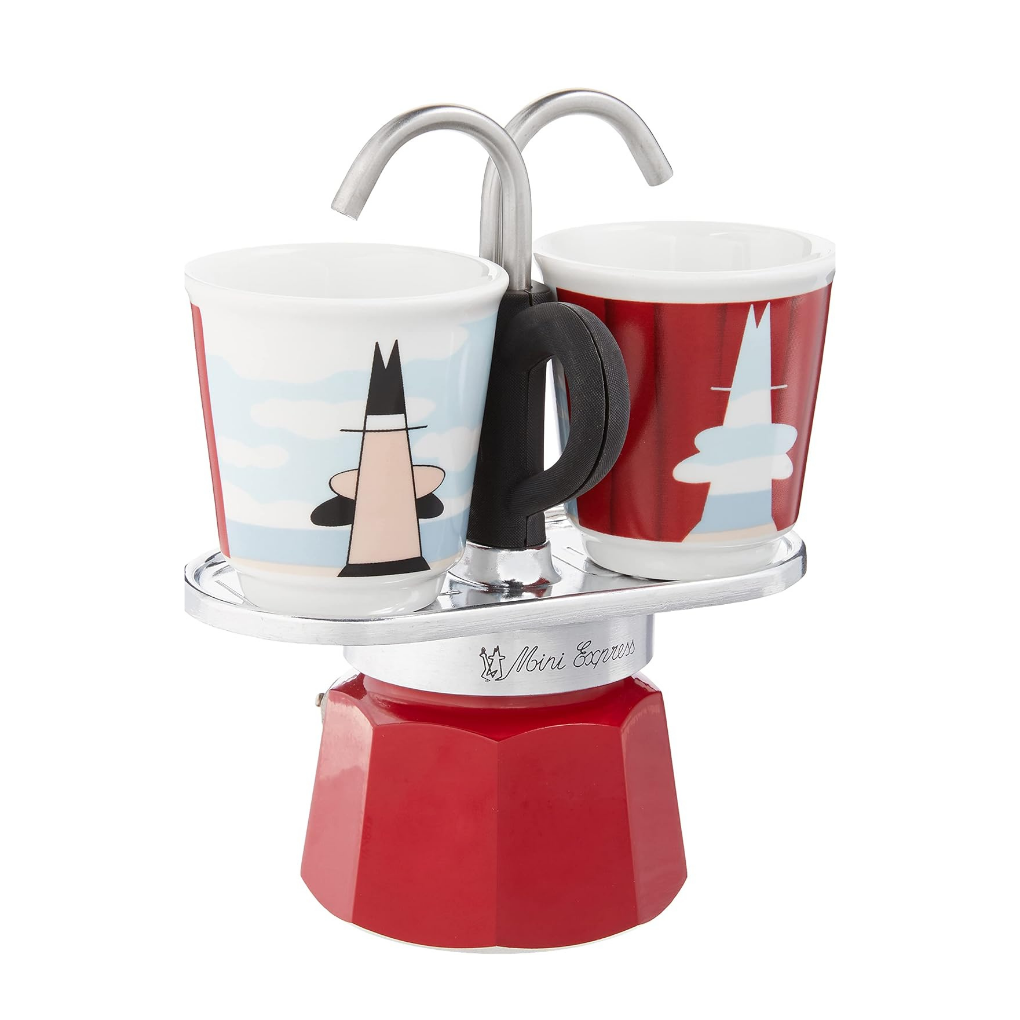
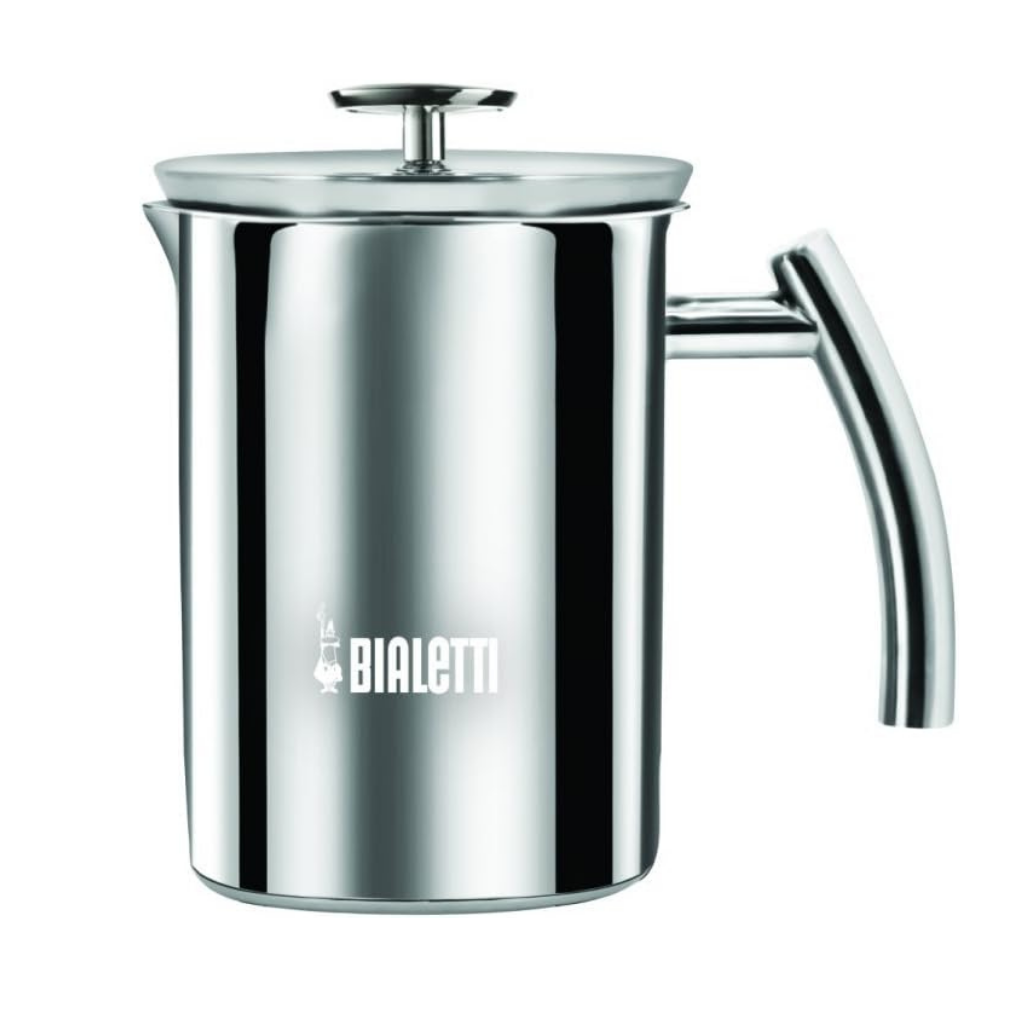
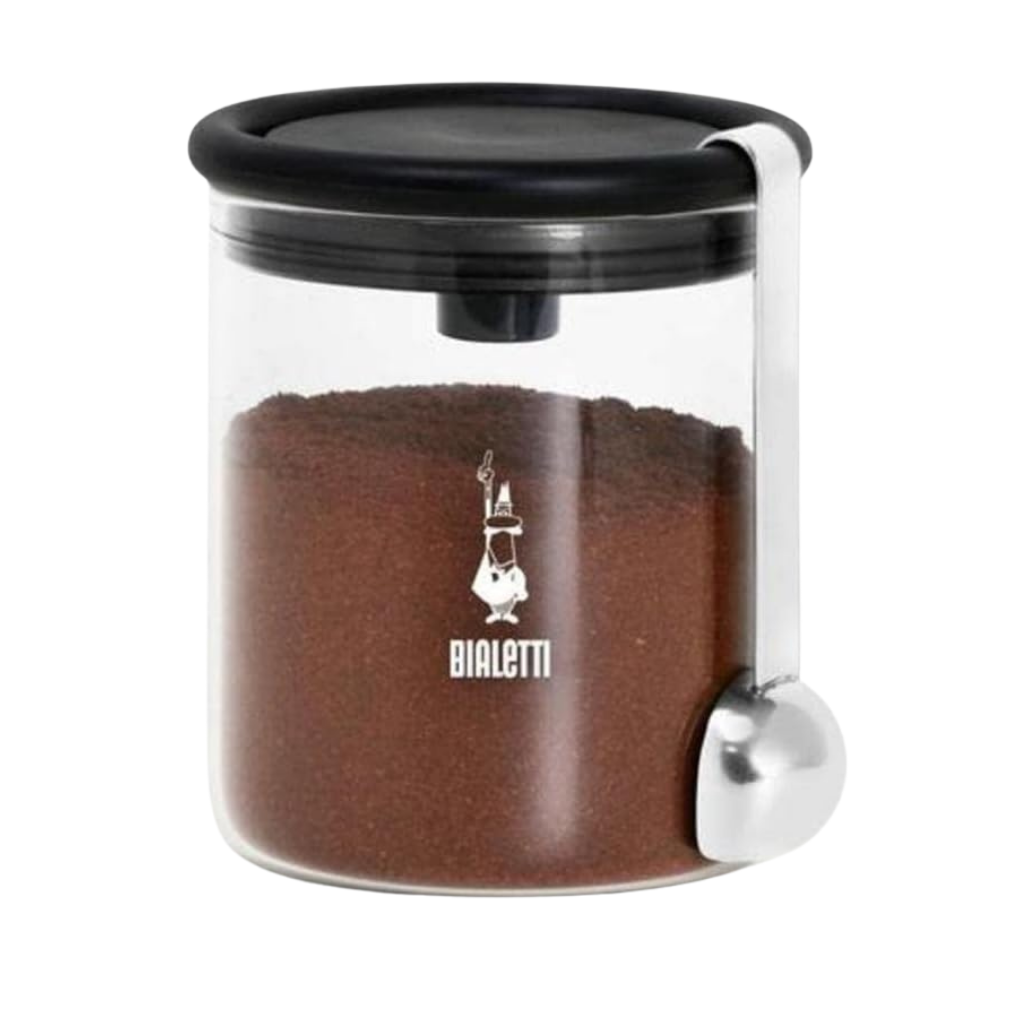
GROSCHE Milano Moka Pot
$40

The Milano brings classic Italian moka pot brewing with thoughtful design features. Made in Italy with premium food-grade anodized aluminum, this stovetop espresso maker features a larger soft-touch handle with burn guard protection to prevent accidental burns.
The Italian safety valve provides reliable protection against pressure buildup, while the premium silicone gasket ensures a perfect seal for optimal brewing. Ideal for making authentic moka coffee at home or adding steamed milk for lattes and cappuccinos.
- Material: Food-grade anodized aluminum construction, premium silicone gasket, and handle.
Tips for Perfect Stovetop Espresso
Moka Pot Mastery
- Use the Right Grind: Medium-fine grind works best—finer than drip coffee but coarser than espresso. Too fine and you’ll clog the filter; too coarse and you’ll get weak coffee.
- Fill to the Valve: Add water to just below the safety valve in the bottom chamber. Never exceed this level or cover the valve.
- Don’t Pack the Coffee: Fill the basket with grounds, but refrain from tamping or pressing down. Level it gently with your finger.
- Use Medium Heat: Start with medium heat and reduce once brewing begins. High heat can create bitter, burnt-tasting coffee.
- Listen for the Gurgling: When you hear that distinctive gurgling sound, your coffee is ready. Remove from heat immediately to prevent over-extraction.
- Preheat Your Water: Use hot water in the bottom chamber to reduce brewing time and prevent the aluminum from overheating.
- Close the Lid: Initially, keep the lid open to observe the coffee flow, then close it once brewing begins to maintain the temperature.
- Clean with Water Only: Never use soap or put in the dishwasher. Rinse with hot water and dry thoroughly to prevent oxidation.
- Check Your Gasket: Replace the rubber gasket annually or when it becomes hard or cracked for optimal brewing pressure.
Percolator Method
COLETTI Bozeman
$38
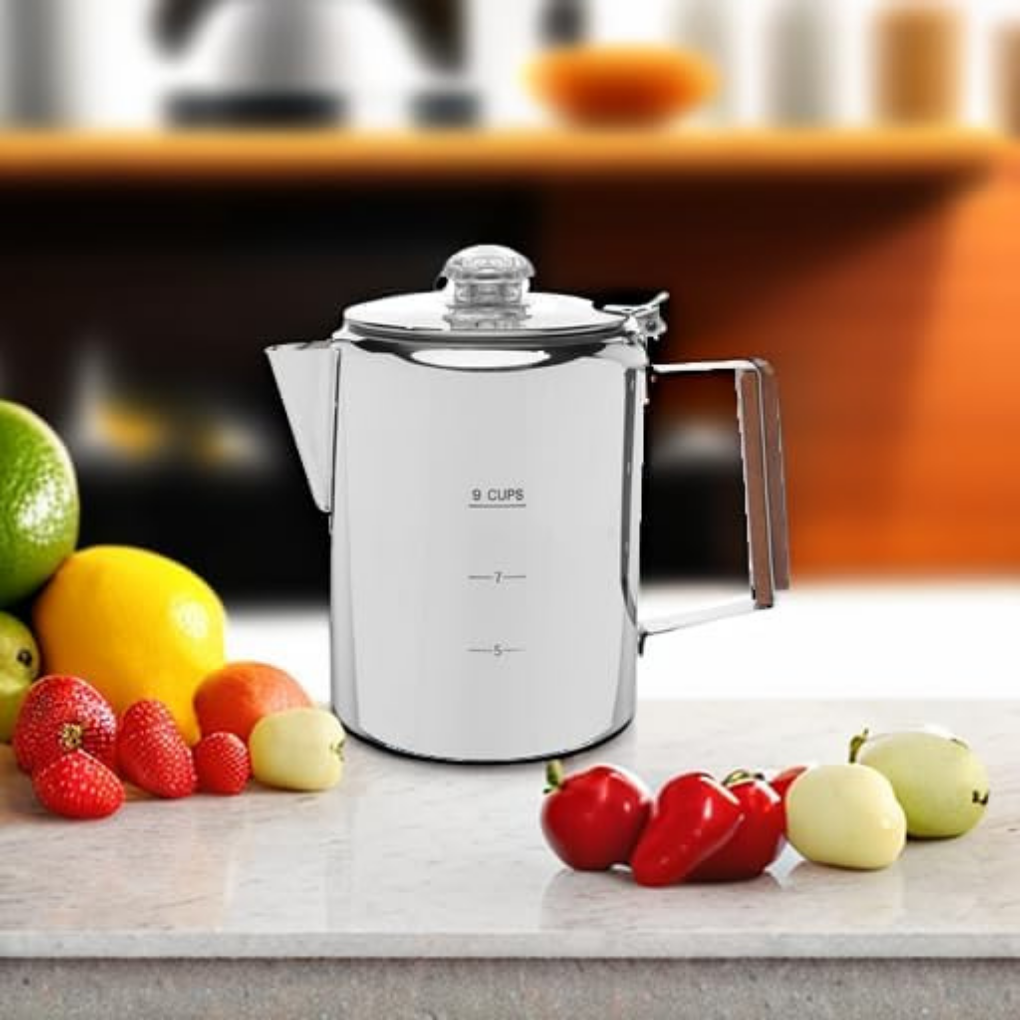
Built for those who refuse to compromise on their morning coffee, whether brewing at basecamp or in the kitchen.
This rugged percolator is crafted from pure stainless steel, with no plastic or aluminum to taint your brew, delivering clean, bold coffee the way it was meant to taste. The glass view top lets you watch the percolation process, while the sturdy construction handles everything from campfires to stovetops.
Quick to clean on the trail with just a rinse, yet refined enough for home use. The steady percolation process draws out deep, full-bodied flavors without bitterness, delivering consistently strong coffee that rewards your patience.
- Material: Food-grade stainless steel construction, heat-resistant glass percolation dome, stainless steel internal components.
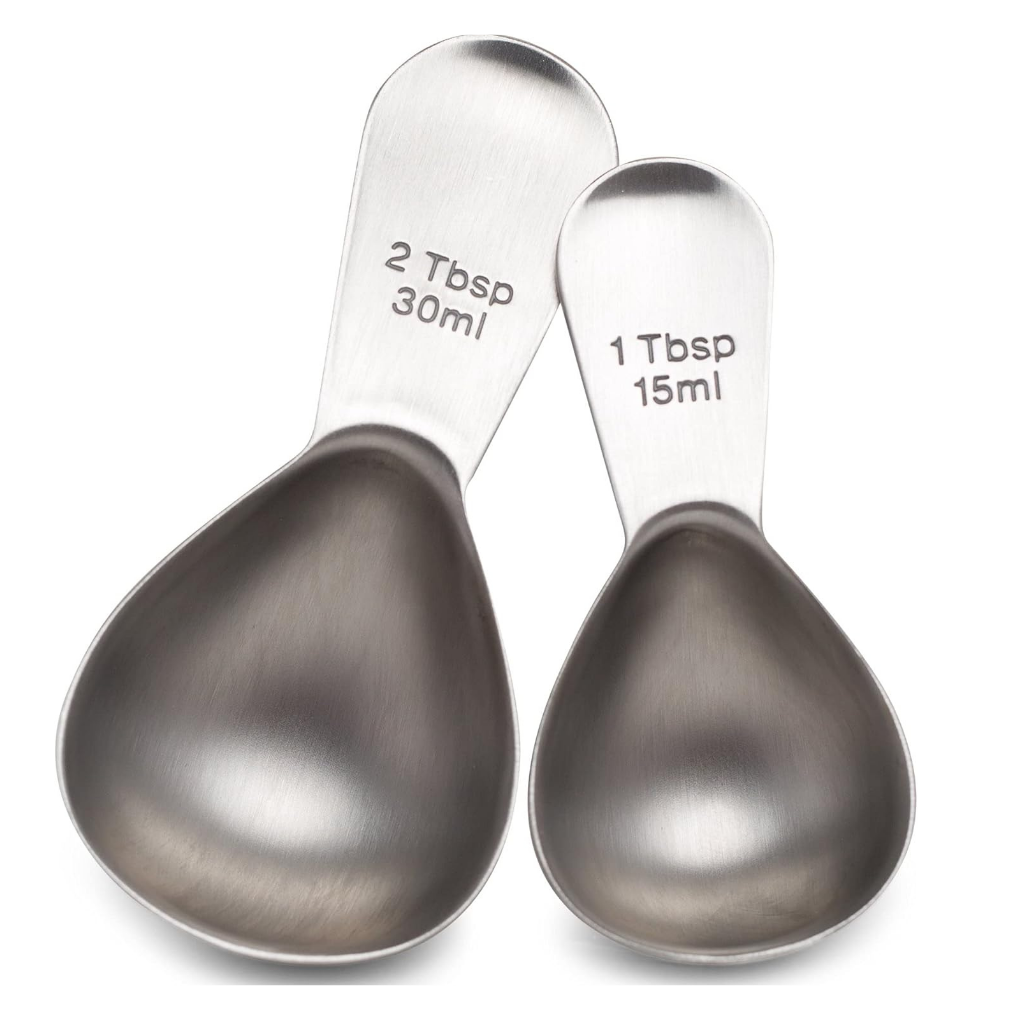
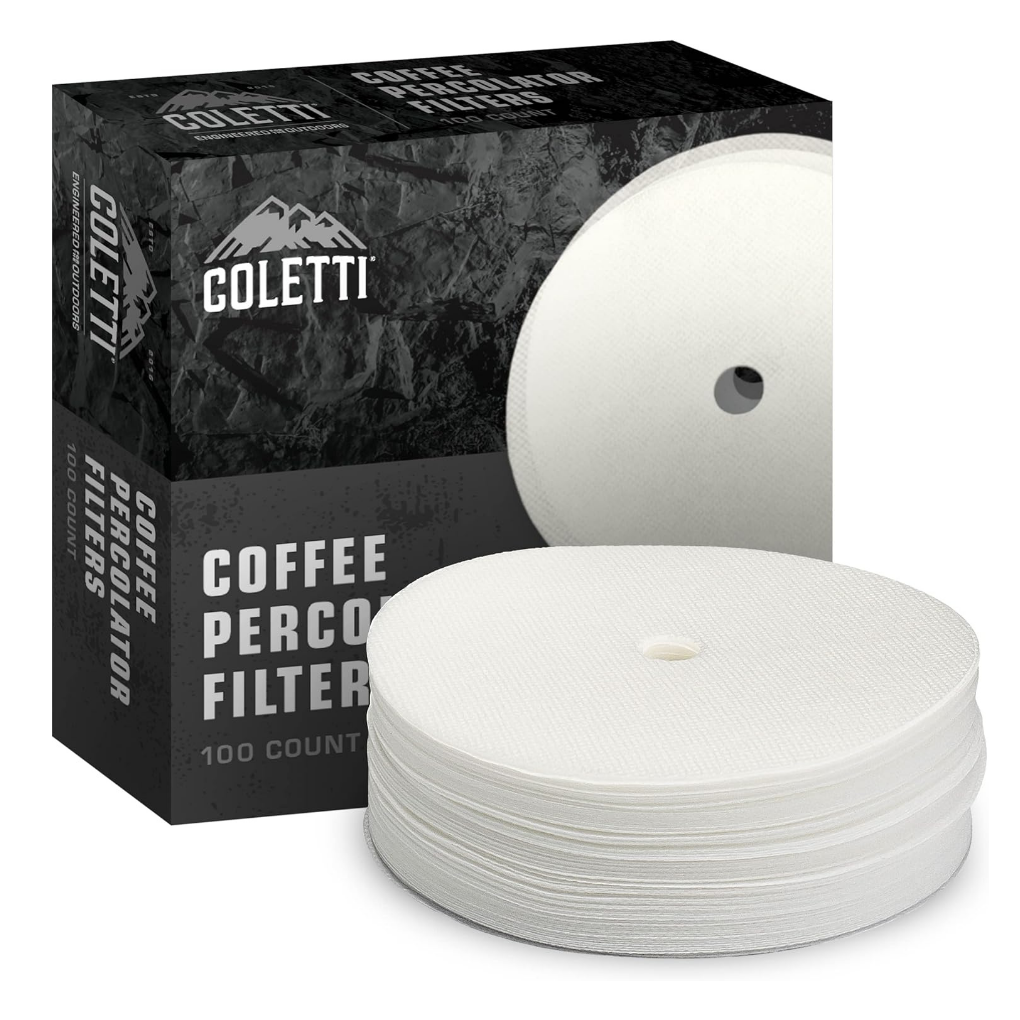
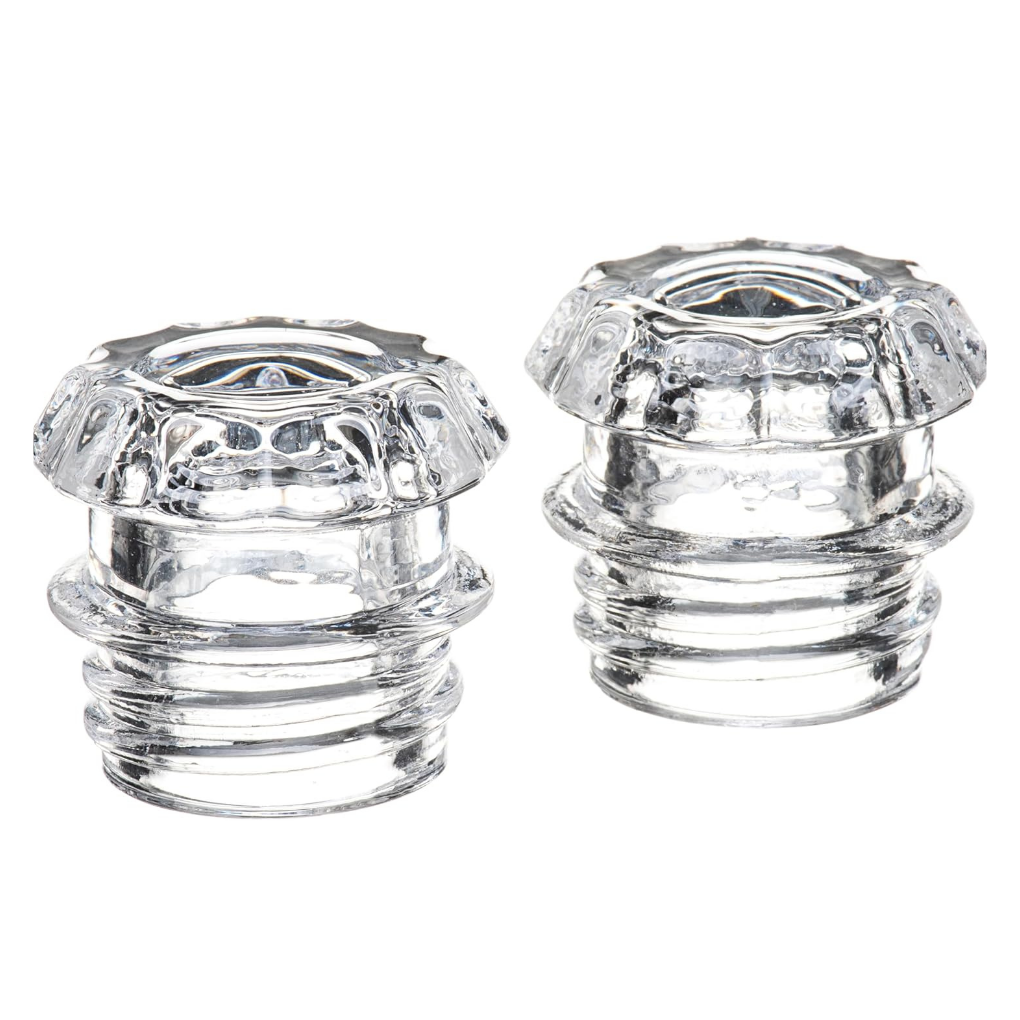
Presto
$61
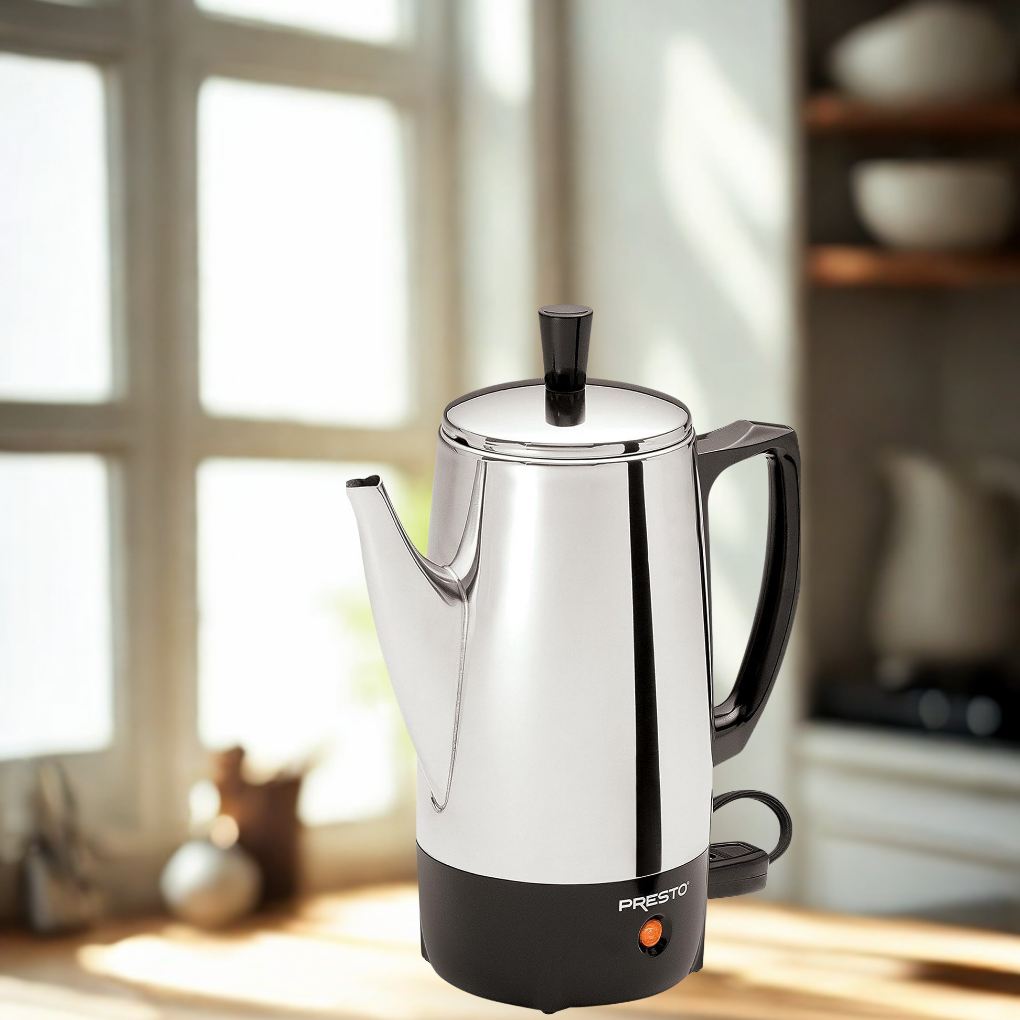
This classic electric percolator brings back the nostalgic sound and ritual of traditional coffee brewing with modern convenience.
Perfect for smaller households or offices, this compact percolator brews 2-6 cups and automatically switches to keep-warm mode once brewing is complete.
The ready-to-serve indicator light takes the guesswork out of timing, while the drip-free spout ensures clean pouring. The detachable cord makes serving and storage simple, and the cool-touch handle and knob provide safe handling.
- Material: Stainless steel construction throughout, cool-touch handle and knob, stainless steel internal components.
Siphon/Vacuum Method
Yama Glass Stovetop
$69
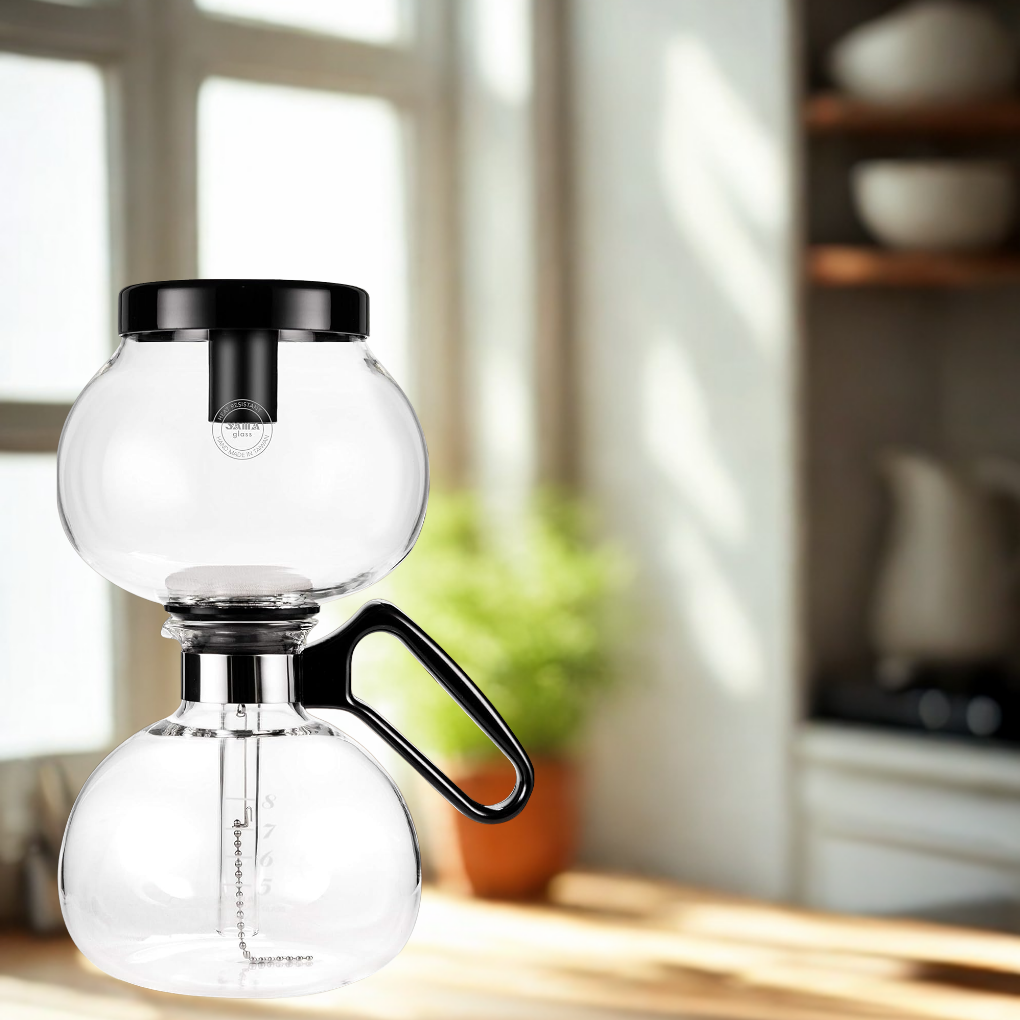
This stunning 24oz siphon brewer elevates coffee brewing into a performance art, delivering exceptionally pure and smooth coffee.
Crafted from durable, heat-resistant borosilicate glass, the Yama siphon uses vacuum brewing science to create a theatrical experience that’s as mesmerizing to watch as the coffee is delicious to drink.
The vacuum process extracts coffee at lower temperatures than traditional methods, highlighting delicate flavors and aromatics while eliminating bitterness.
- Material: Heat-resistant borosilicate glass construction throughout, reusable cloth filter system, glass measuring components, completely plastic-free design.
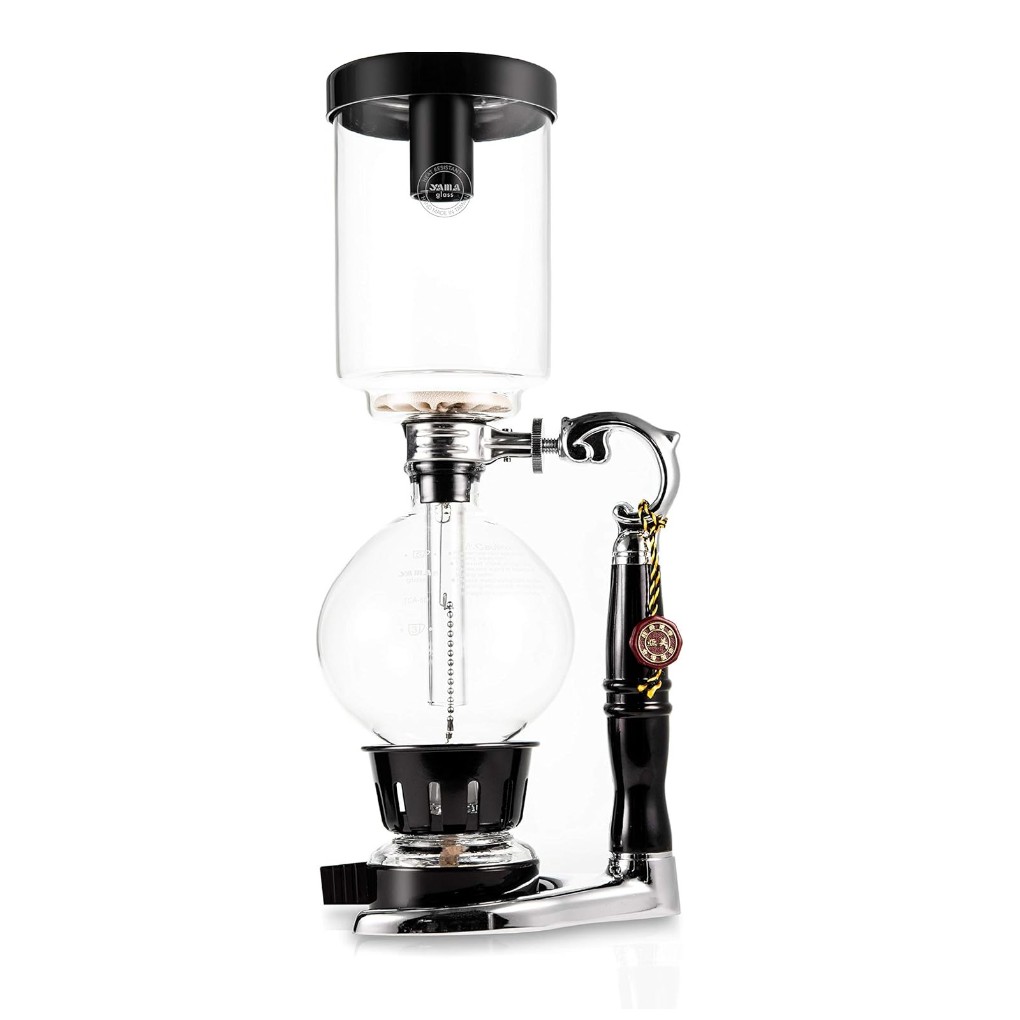
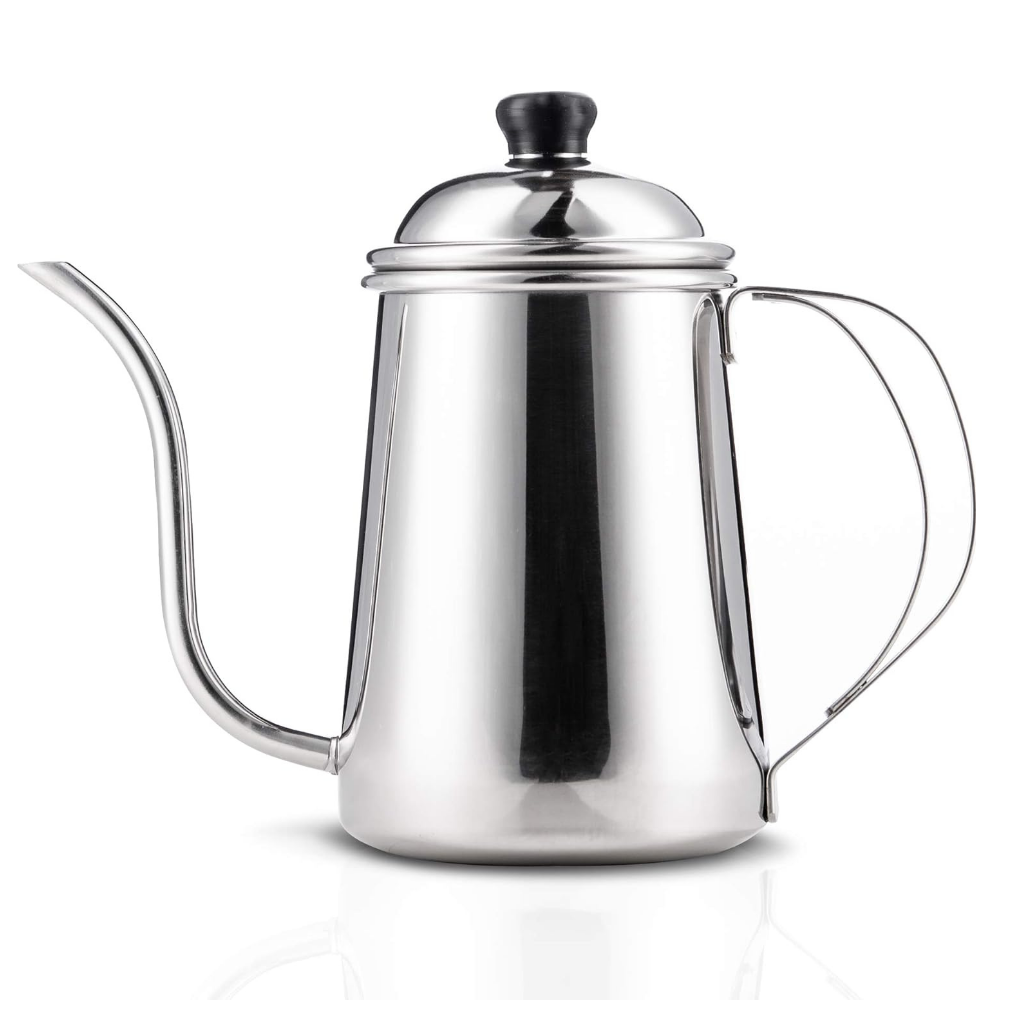
Hario “Technica”
$95
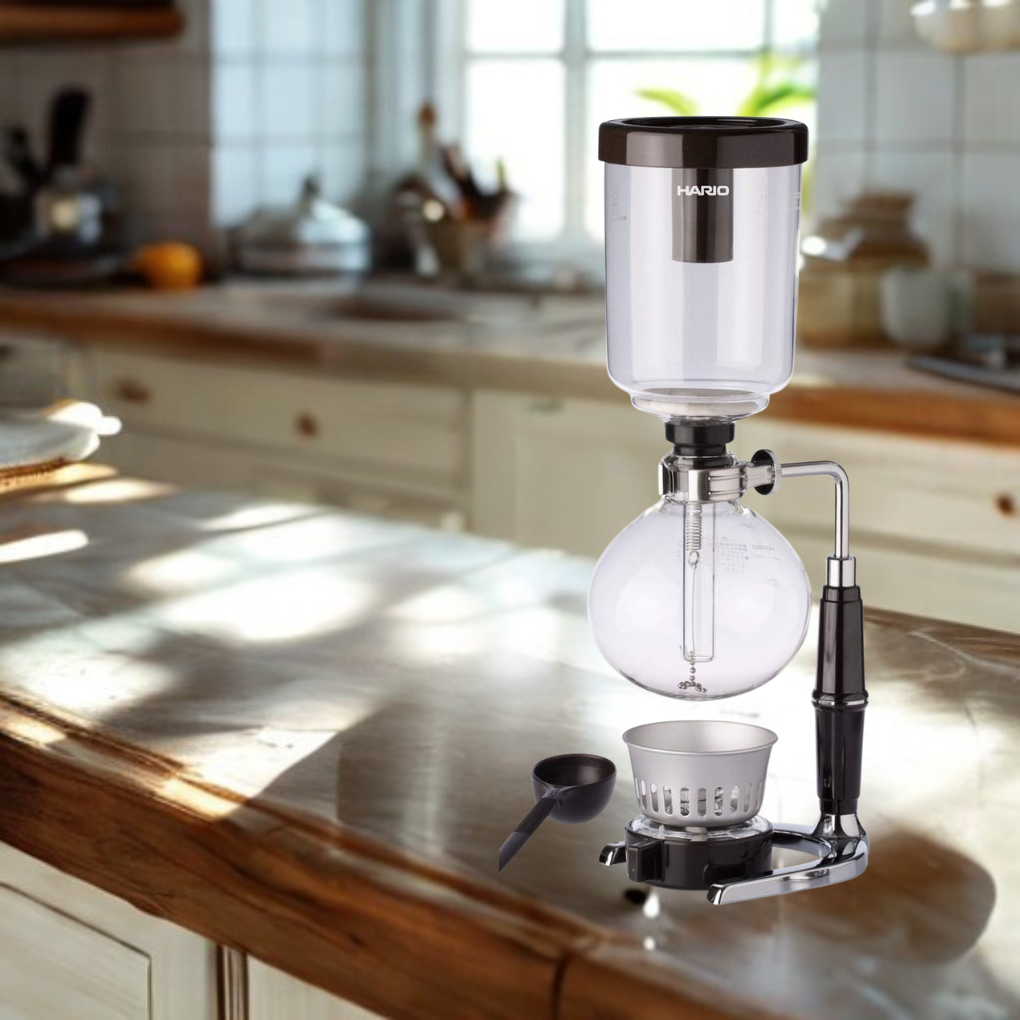
The Hario Technica represents the pinnacle of Japanese coffee craftsmanship, combining traditional siphon brewing with premium materials and meticulous engineering.
Imported directly from Japan, this elegant brewer features upper and lower bowls crafted from Hario’s finest heat-resistant borosilicate glass, known for exceptional clarity and thermal stability.
The stainless steel stand, burner cover, and filter system provide durability and precise temperature control, while brass fasteners and an aluminum windbreak showcase attention to detail. The theatrical brewing process creates a mesmerizing display, extracting exceptionally clean and nuanced flavors that highlight your coffee’s unique characteristics.
- Material: Heat-resistant borosilicate glass bowls, stainless steel stand and filter system, brass fasteners, and aluminum windbreak.
Siphon Brewing Tips
Perfect Vacuum Extraction
- Master Your Heat Source: Maintain a steady, medium heat throughout the brewing process. Too high and you’ll over-extract and potentially crack the glass; too low and the vacuum won’t form properly.
- Use the Right Grind: A medium to medium-fine grind works best, similar to a pour-over. Too fine will clog the filter; too coarse won’t extract properly during the short brewing time.
- Water Temperature Matters: Start with water around 200°F in the bottom chamber. The siphon process will naturally cool it to the ideal 195-205°F brewing range.
- Perfect Your Timing: Once water has moved to the upper chamber, brew for 45-90 seconds, depending on your taste preference. Longer extraction brings out more body and bitterness.
- Stir Gently: Give the coffee a gentle stir when water first enters the upper chamber, then leave it undisturbed. Over-stirring can lead to over-extraction.
- Watch the Drawdown: When you remove heat, coffee should filter back down in 60-90 seconds. If it’s too slow, try a coarser grind or clean your filter.
- Handle with Care: Always let the glass cool to room temperature before cleaning. Rapid temperature changes can cause even heat-resistant borosilicate glass to crack.
- Keep Filters Clean: Rinse cloth filters immediately after use and replace them regularly for the best flavor. Old filters can impart off-tastes.
- Coffee-to-Water Ratio: Start with a 1:15 ratio (1g coffee to 15g water) and adjust to taste. Siphon brewing tends to highlight acidity and clarity.
Drip Method
Technivorm Moccamaster
$309
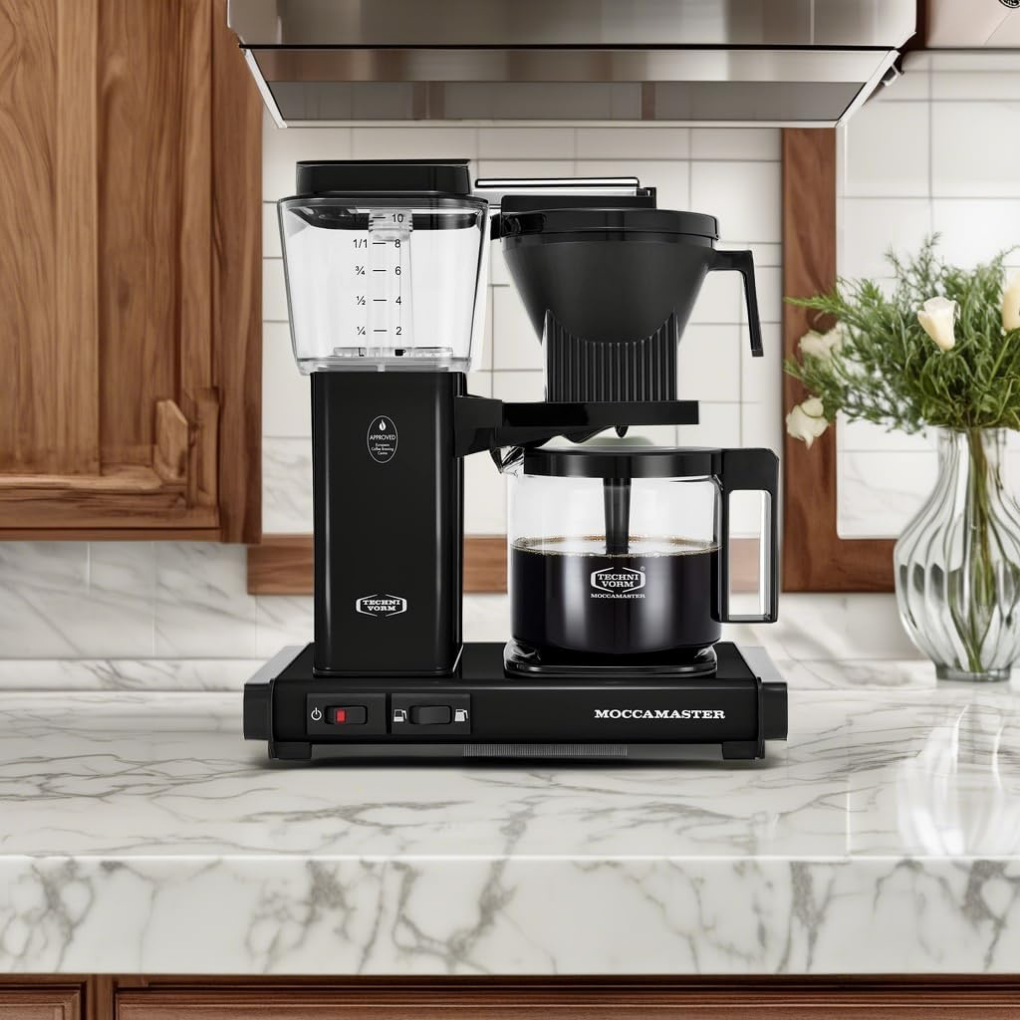
The KBGV Select takes the legendary Moccamaster quality and adds intelligent brewing flexibility with its brew-volume selector switch—perfect for brewing either half or full carafes without compromising extraction quality.
This pump-free marvel uses a copper boiling element to heat water to the precise 196-205°F range for optimal coffee extraction, then delivers it through a unique pulse-brewing system that mimics th hand-pour technique.
- Material: Durable metal housing, copper boiling element, glass carafe, BPA/BPS/BPF-free plastics for non-heated components like brew basket and water reservoir.
Espresso Method
Flair PRO 3
$325
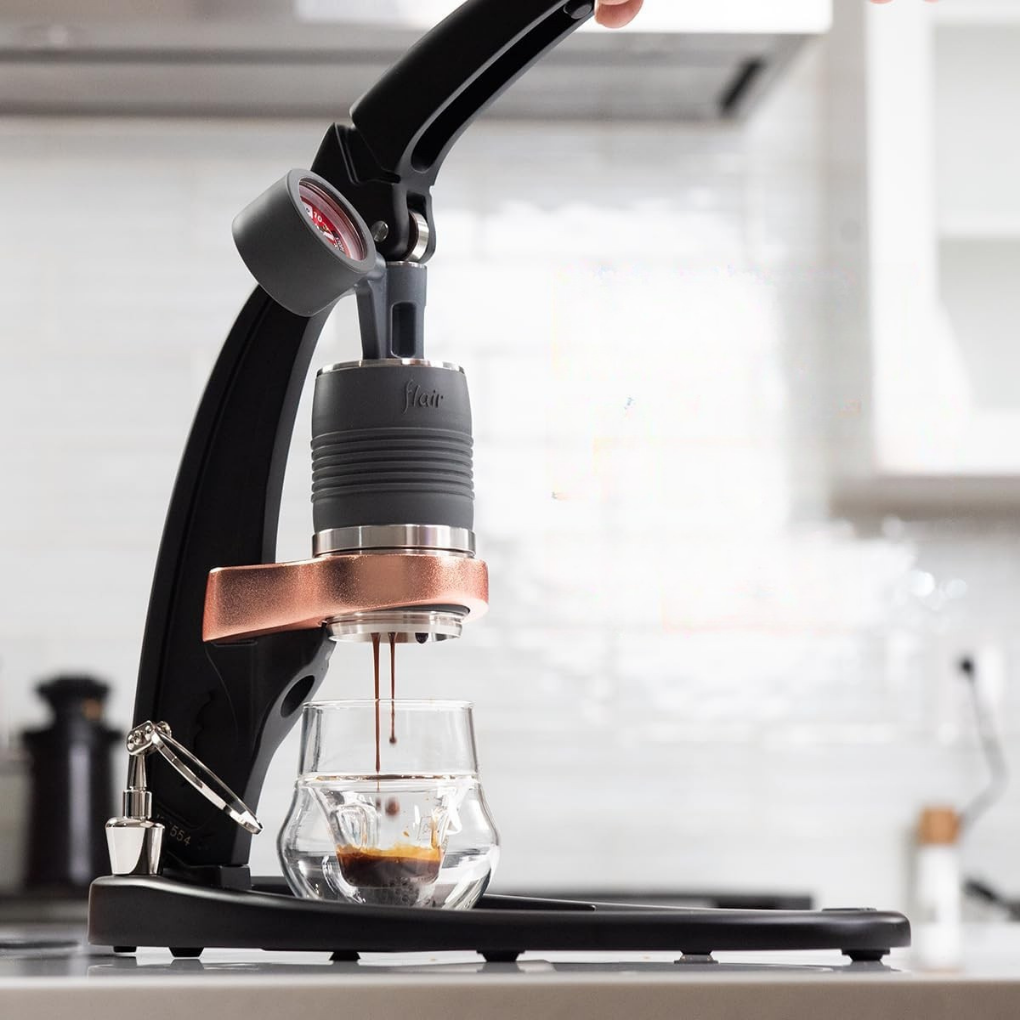
The Flair PRO 3 brings authentic café-quality espresso to your kitchen without the need for electricity, pumps, or plastic components. This 100% human-powered lever machine puts complete control in your hands, featuring a custom pressure gauge with an “Espresso Zone” indicator to help you achieve the perfect 6-9 BAR extraction pressure.
The detachable stainless steel brewing head features a patented design that allows for complete disassembly for thorough cleaning. This design also enables the entire machine to pack into its precision-cut carrying case for convenient travel.
- Materials: Cast aluminum press stand and lever, stainless steel brewing head and components, completely plastic-free construction
La Pavoni EPC-8 Europiccola
$1,108
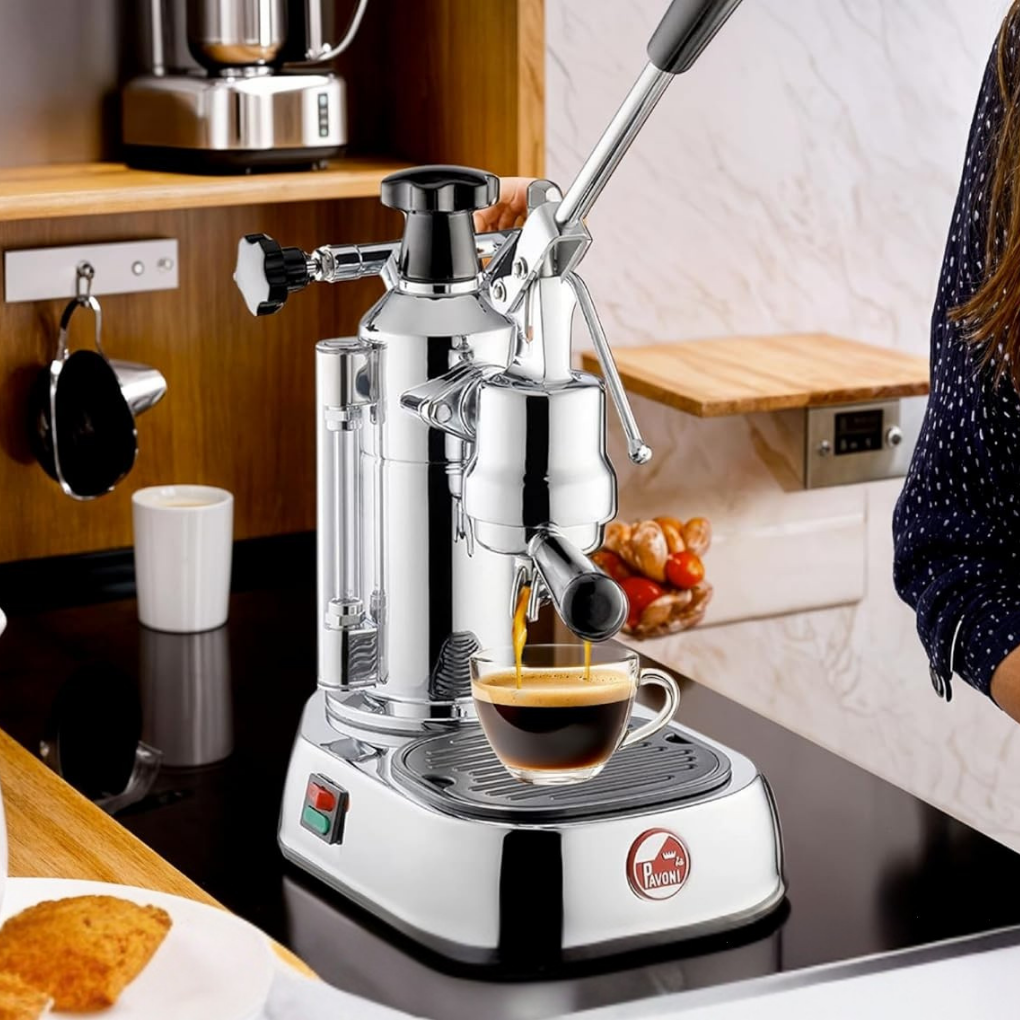
The La Pavoni Europiccola embodies nearly a century of Italian espresso tradition, handcrafted with the same attention to detail that made La Pavoni legendary among espresso enthusiasts.
This timeless lever machine features exquisite chrome and silver styling, transforming your kitchen into an authentic Italian café.
The manual lever operation provides complete control over the extraction process. Perfectly sized for home use with 0.8L water capacity, this machine excels at making one or two cups at a time with the ritual and romance that only manual brewing can provide.
- Material: Premium stainless steel construction, chrome-plated components, brass internal fittings, minimal plastic components (primarily in non-contact areas like handles).
Recommended Products
Essential Plastic-Free Coffee Accessories
Brewing Quality and Performance
Let’s get one thing out of the way: going plastic-free doesn’t mean settling for a weaker cup. In fact, many plastic-free coffee makers outperform their conventional counterparts in flavor, temperature consistency, and overall brewing control.
It comes down to choosing the right design and understanding what makes a better brew.
🔥Brew Temperature and Heat Retention
Brew temperature is one of the most significant factors in coffee quality, and materials like stainless steel cast aluminum, and ceramic retains heat far more consistently than plastic. That means more stable brewing conditions, better extraction, and fewer bitter or sour notes.
Some drip and pour-over systems even feature shower head designs or intelligent brewing algorithms that optimize how water flows over the grounds, ensuring even saturation and balanced flavor.
⏰Saturation and Bloom Control
Great coffee isn’t just about water and grounds; it’s also about timing. A proper bloom (that quick puff of carbon dioxide released when hot water hits fresh coffee) is key to unlocking flavor. Many pour-over systems and manual espresso machines offer full control over timing and water flow, allowing you to perfect the bloom phase and extract the most from your beans.
The basket shape in drip brewers also plays a role here. Flat-bottom baskets promote more even extraction, while cone-shaped baskets focus on the water flow and may highlight certain flavors. In plastic-free models, these baskets are often made of metal or ceramic, preserving taste without introducing contaminants.
🌡️Espresso Performance and Crema Quality
If you’re going the manual espresso route, look for a stainless steel brewing head and solid internal construction. These elements help maintain pressure and temperature stability, both of which are critical for producing rich, velvety crema. Some machines, such as lever-style or press-based espresso makers, offer this option without a single plastic component.
❄️Cold Brew and No-Heat Options
Cold brew fans, don’t worry you’re covered, too. Glass and stainless steel brewers are ideal for steeping coffee slowly without leaching chemicals. Since no heat is involved, you avoid the primary risk of microplastic release while still enjoying a smooth, low-acid cup.
🤌Ease of Use Without Sacrificing Flavor
Plastic-free doesn’t have to mean complicated. While some manual methods without relying on plastic parts in the brew path.
So, if you’re wondering whether going plastic-free means giving up your favorite brew style—the answer is no. If anything, it’s a chance to upgrade your coffee routine in every sense: better materials, cleaner flavor, and much more peace of mind.
How Do I Clean and Maintain My Coffee Maker?
Daily Cleaning
After each use, rinse the carafe and filter basket with warm water and mild dish soap. Wipe down the exterior with a damp cloth, paying particular attention to the hot plate and any areas where coffee has been spilled. Empty and rinse the water reservoir if you won’t be using the machine for several hours.
Weekly Deep Clean
Remove all removable parts, including the carafe, lid, filter basket, and water reservoir. Wash these components in warm, soapy water or place them in the dishwasher if they’re dishwasher-safe. Use a soft brush or cloth to scrub away coffee oils and residue. Clean the hot plate with a damp cloth when the machine is cool, and wipe down the entire exterior.
Monthly Descaling
Mineral buildup from water can clog your coffee maker and affect taste. Fill the water reservoir with an equal mixture of white vinegar and water. Run a brew cycle without coffee, then let the solution sit in the carafe for 15-30 minutes. Run 2-3 cycles of plain water to remove any vinegar residue. For machines with heavy mineral buildup, you may need to repeat this process or use a commercial descaling solution.
FAQs About Plastic-Free Coffee Makers
When hot water passes through plastic reservoirs, tubing, or pods, it can release microplastics and chemicals like BPA and phthalates. Over time, these can contribute to hormone disruption, inflammation, and potential long-term health effects.
A coffee maker is only truly plastic-free if every part that touches hot water or coffee, including the reservoir, tubing, filter basket, and carafe, is made from stainless steel, glass, or ceramic. Handles or knobs can be plastic as long as they never contact the brew.
Plastic-free brewers reduce reliance on fossil fuel–based plastics, cut waste from non-recyclable components, and avoid single-use pods that often end up in landfills or oceans. Materials like stainless steel and glass are far more sustainable and recyclable.
Yes. “BPA-free” only means that one chemical — bisphenol A — has been removed, but other bisphenols (like BPS and BPF) or additives such as phthalates can still be present. Under heat and acidity, these chemicals may leach into your coffee just like BPA. 🤔 Want to learn more about BPA? Check out our complete guide: How to Tell If Plastic Is BPA-Free.
Final Thoughts on Plastic-Free Coffee Makers
Switching to plastic-free coffee brewing is one of those simple changes that makes a real difference for your health and your daily ritual. These aren’t trendy gadgets that’ll break in two years; they’re investments that get better with time. Whether you fall for the elegance of a Chemex or the hands-on satisfaction of a manual espresso machine, you’re choosing quality materials that won’t leach anything unwanted into your morning cup.
The best part? Most of these brewers will outlast any plastic machine by decades. You can start with one method that excites you, perfect your technique, and enjoy knowing exactly what goes into every cup. Your coffee and your peace of mind deserve nothing less.
📚References
- Akbulut, S., et al. (2024). Microplastic release from single-use plastic beverage cups: Temperature and duration effects. Environmental Pollution. https://pmc.ncbi.nlm.nih.gov/articles/PMC11121293/
- Al-Mansoori, M., Harrad, S., & Abdallah, M. A.-E.-E. (2025). Synthetic microplastics in hot and cold beverages from the United Arab Emirates. Science of the Total Environment. https://www.sciencedirect.com/science/article/pii/S0048969725018285
- Hananeh, W., Zaiton, F., Al-Dmoor, H., Al-Qudah, M., Al-Shunnaq, A., & Tanuwidjaya, F. (2021). Exposure assessment of bisphenol A by drinking coffee from plastic cups. Food and Chemical Toxicology, 149, 112007. https://doi.org/10.1016/j.fct.2021.112007
